
EYOND
THE FIELD



a Footballer's Odyssey




Beyond The Field: A Footballer's Odyseey
experiential book
about football
THE


PUBLISHED BY XBOOK UNIVERSE


for a full view on subchapters and complete Xbook navigation, use the menu button on the bottom left side
CONTENTS

INTRODUCTION


S
UCCESS
I
S
NO
accident
hard work, perseverance, learning, studying, sacrifice and most of all, love of what you are doing or learning to do
IT IS

Pelé
Football is more than just a sport. It is a way of life, a universal language that transcends borders and brings people together. From the sunlit fields of South America to the vibrant stadiums of Europe, soccer has captured the hearts and minds of millions across the globe. It is a game that transcends borders, cultures, and languages, unifying people under the banner of competition, camaraderie, and the pursuit of excellence.
The beautiful game ignites powerful emotions in the heart of every player and fan like no other sport. It unites people from different backgrounds into a single, cohesive force, driven by their shared love for this sport.


The purpose of this book is to provide you with a comprehensive guide to not only improve soccer knowledge but also to understand the philosophy and best practices that underpin this beautiful game at its highest level.
By exploring the mental, emotional, and strategic aspects of the game, you will gain a deeper appreciation for the sport and unlock your full potential as a player, fan or supporter. We will delve into various aspects of football, including its history, philosophy, different playing styles, tactical awareness, technical skills, and lifestyle beyond the game.
During the reading journey, I encourage you to reflect on your own experiences, identify areas for improvement, and actively apply the lessons learned to your own development. The path to football mastery is a lifelong journey, and I hope this book will serve as a valuable resource and source of inspiration as you pursue your dreams on the field.


SCROLL

In today's fast-paced and increasingly competitive world, it's essential to stay ahead of the curve and continually nurture your skills. You will discover insights and tactics necessary to elevate your game, whether you're a young aspiring player, an experienced veteran, or a coach looking to inspire the next generation of soccer stars.
Football mastery is not just about physical capabilities and technical skills; it's also about understanding the game's philosophy, embracing its values, and continuously learning from your experiences.
It's about having the courage to face challenges head-on, the resilience to bounce back from setbacks, and the humility to grow from your mistakes. During this reading, I encourage you to approach it with an open mind, a curious spirit, and a hunger for knowledge. You'll find yourself not only gaining a deeper understanding of football but also discovering your own unique strengths and areas for growth.
By taking a holistic approach to your development, you'll be better equipped to adapt to the ever-changing landscape of the sport and to overcome the challenges that lie ahead. Football, like life, is a journey filled with ups and downs, successes and failures. Embracing this journey and learning from your experiences will not only make you a better player but also a better person. This book aims to help you cultivate a growth mindset, empowering you to face obstacles with determination and optimism, and to always strive for improvement, both on and off the field.


SCROLL
I would like to express my gratitude to you, the reader, for embarking on this journey with me. It's my sincere hope that this XBOOK will provide you with valuable insights, practical advice, and inspiration as you pursue your dreams in the world of football.
Remember, the journey towards soccer mastery is a lifelong endeavor, and the key to unlocking your full potential lies in your dedication, curiosity, and passion for the game. As a football player, you have the opportunity to be a role model for others, both on and off the field. By exemplifying the core values of the sport, you will not only elevate your own game but also contribute to the growth and development of soccer as a whole.
So, let's get started!
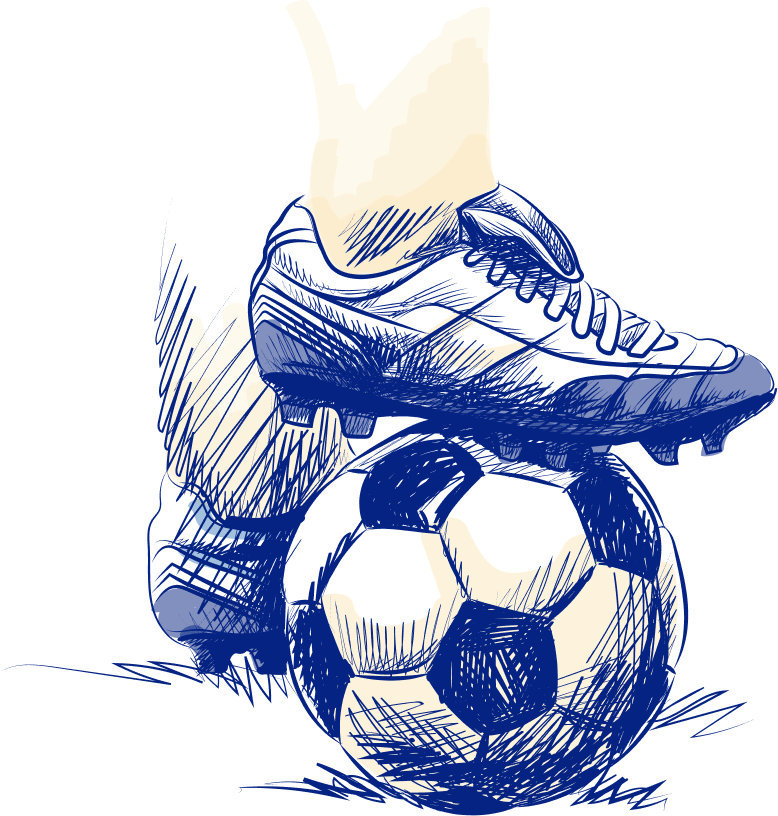


THE BEAUTIFUL GAME

CHAPTER

F
OOTBALL
I
S
ABOUT
joy
about dribbling. I favour every idea that makes the game beautiful. Every good idea has to last.
IT'S

Ronaldinho
Football, known as soccer in most parts of the world, is a sport that transcends boundaries and unites people from all walks of life. From the dusty streets of South America to the pristine grass of European stadiums, the beautiful game's captivating appeal is undeniable.




Football has a history that spans over two thousand years, with various cultures playing ball games that shared similarities with the modern sport. However, it was in England during the 19th century that the game started evolving into the sport we know today. Since then, football has spread across the globe, transforming into a phenomenon that captivates billions of fans and inspires dreams of glory and success.
Football’s global impact is evident not only in its popularity but also in its ability to break down barriers and foster unity. The sport has a unique power to bring people together, regardless of their nationality, religion, or social standing. Football transcends these differences, creating a shared language that resonates in every corner of the world. The World Cup, held every four years, exemplifies this notion, as fans from across the globe come together to celebrate their love for the game.
At its core, football is a sport driven by emotion. The passion and intensity that fans feel for their teams are unrivalled in the world of sports. From the electrifying atmosphere in packed stadiums to the tears of joy or despair that follow crucial victories or defeats, the emotional investment of football's supporters is a testament to the game's magnetic allure.
As a player, the beautiful game offers an unparalleled sense of freedom and creativity. With a ball at your feet, the possibilities are endless, limited only by your skill and imagination. Football is a sport that rewards those who dare to dream, providing a platform for self-expression and moments of individual brilliance that can change the course of a match in an instant. It comprises a complex blend of a diverse history, worldwide influence, and profound emotions driven by both players and fans.

SCROLL
THE BEAUTIFUL GAME
Football has a long and rich history that transcends centuries and crosses continents. The roots of the modern game can be traced back to various ancient civilizations, each with their own forms of football-like games. Understanding the evolution of football and its emergence as one of the world's most beloved sports provides valuable context for appreciating the game we know today.






1.1 Football: A Brief History
The earliest recorded form of a soccer-like game dates back to around 3rd century BC in China during the Han Dynasty. This game, called "cuju", involved players using their feet to kick a leather ball through a small opening in a piece of cloth or a net. Cuju was primarily played by soldiers for training purposes, but eventually gained popularity among the general population as well.

CHINA
3
rd
CENTURY, BC




CLASSICAL ANTIQUITY
A
NCIENT GREECE
& ROME



In ancient Greece, a sport called "episkyros" was played, which also involved kicking a ball with the feet. The game featured two teams of equal numbers, with the objective of getting the ball across the opposing team's goal line.
The Romans played a similar game called "harpastum", which they likely adapted from the Greek episkyros. Harpastum was a more physical game, with players using both their hands and feet to move the ball, often leading to violent clashes between participants.

SCROLL
In medieval Europe, various forms of football games were played in local communities. These games often involved a large number of players and could span across entire towns or villages.
In England, this early form of football was known as "mob football" and was known by its rough and chaotic nature, with very few rules and plenty of physical contact.

MIDDLE AGES
M
EDIEVAL
EUROPE




ENGLAND
19
th
CENTURY
The modern form of football began to take shape in England during the 19th century. Schools and local communities played different versions of football, with each having its own unique set of rules.
In an attempt to standardize the game and create a universal set of rules, representatives from various schools and clubs met at the Freemason's Tavern in London in 1863. This gathering marked the formation of the Football Association (FA), which established the first standardized rules for soccer, known as the Laws of the Game.
The FA's Laws of the Game marked a significant departure from the earlier, more violent versions of football. One of the key distinctions was the prohibition of using hands to touch the ball, setting soccer apart from other codes of football, such as rugby. As the game spread across the British Isles, clubs and leagues began to form, giving rise to the organized structure of soccer we know today.




SCROLL

WORLDWIDE
20
th
CENTURY
Football's international reach expanded rapidly, with British sailors, merchants, and expatriates introducing the game to various countries around the world. By the late 19th and early 20th centuries, the games had taken root in Europe, South America, and Africa. In 1904, the Fédération Internationale de Football Association (FIFA) was founded in Paris, with the goal of governing the international aspects of the sport and organizing international competitions.
The inaugural FIFA World Cup took place in 1930 in Uruguay, marking the beginning of the world's most prestigious soccer tournament. The World Cup has since become a quadrennial event that captivates audiences around the globe and serves as a showcase for the sport's greatest talents.




SCROLL
Today, football has evolved into a multifaceted and highly competitive sport, with professional leagues, clubs, and national teams vying for supremacy on the world stage.
Technological advancements, such as the introduction of goal-line technology and the Video Assistant Referee (VAR) system, have further refined the game and brought it into the modern era.


THE BEAUTIFUL GAME
1.2 The Global Appeal of Football
Football's meteoric rise as the world's most popular sport can be attributed to several factors, including its simplicity, accessibility, and unifying power.
With an estimated 4 billion fans and over 270 million registered players, the game has transcended geographical, cultural, and social boundaries, establishing itself as a truly global phenomenon.
One of the primary reasons for soccer's widespread appeal is its simplicity. The basic concept of the game is easy to understand: two teams of 11 players each compete to score goals by kicking a ball into their opponent's net. The rules are straightforward, and the equipment required is minimal – all that is needed is a ball and a flat, open space.
This simplicity allows soccer to be played almost anywhere, from the lush fields of Europe to the dusty streets of Africa, making it accessible to people from all walks of life.

SIMPLICITY

ACCESSIBILITY
Accessibility is another significant factor contributing to the popularity of football. The sport can be played by individuals of all ages, genders, and skill levels. In many countries, soccer is introduced to children at a young age, often through school or community programs. This early exposure to the sport helps to foster a lifelong passion for the game, as well as develop essential skills, such as teamwork, communication, and perseverance.
Football's accessibility also extends to its spectators, with matches broadcasted on television and streamed online, making it easy for fans to follow their favourite teams and players anywhere in the world.

UNIFYING POWER
Soccer's global appeal is further amplified by its unifying power. The sport has the unique ability to bring people together, transcending geographical, cultural, and social boundaries. International competitions, such as the FIFA World Cup and the UEFA Champions League, showcase the game's diversity, with teams from different nations and continents competing for glory.
These tournaments foster a sense of global camaraderie, as fans from around the world gather to support their national teams or favourite clubs, often setting aside political and cultural differences in the process.
2.2 The Global Appeal of Football


SCROLL
The world of football also boasts a diverse array of fan cultures. Passionate supporters create unique matchday atmospheres in stadiums across the globe, with each nation and club boasting its own distinct traditions and customs. From the vibrant South American fans to the cheerful chants of English supporters, the passion and dedication of soccer fans are integral to the sport's allure. These fan cultures not only contribute to the excitement and spectacle of the game but also serve as a source of identity and pride for those who belong to them.


Football's global appeal can also be attributed to the larger-than-life personalities that have graced the sport. Iconic players, such as Pelé, Diego Maradona, Lionel Messi, and Cristiano Ronaldo, have captured the imagination of fans worldwide with their extraordinary skills, unforgettable goals, and magnetic charisma. These superstars have transcended the sport itself, becoming cultural icons and inspiring millions of people to follow in their footsteps.
Soccer has also given rise to some of the world's most famous rivalries, which further stoke the passion of fans and generate intense interest in the sport. Matches between long-standing adversaries, such as Barcelona and Real Madrid, Manchester United and Liverpool, or Boca Juniors and River Plate, are eagerly anticipated events that draw massive global audiences. These rivalries not only add drama and excitement to the game but also showcase the competitive spirit that lies at the heart of soccer.
Moreover, the tremendous global popularity of the game has led to significant investments in the sport, both at the grassroots and professional levels. Clubs and national teams around the world have developed academies and training facilities to nurture young talent, ensuring that the future of soccer remains bright. These investments not only contribute to the growth of the sport but also provide opportunities for aspiring players to hone their skills and pursue their dreams of becoming professional soccer players.
This overwhelming interest in football has also resulted in the development of various styles and tactics, which add to the richness and diversity of the game. From the tiki-taka possession-based style popularized by Spanish clubs to the high-pressing, fast-paced approach favored by German teams, soccer is a melting pot of ideas and philosophies that continually evolve and adapt. This fluidity and dynamism make the sport endlessly fascinating and engaging for players, coaches, and fans alike.
Another angle that the sport has an incredible contribution in is the establishment of various charitable organizations and initiatives aimed at harnessing the sport's power for social good. Programs such as Soccer Without Borders, Common Goal, and Right to Play use soccer as a vehicle to promote education, health, and social inclusion in underprivileged communities around the world. These initiatives demonstrate the sport's potential to create positive change and reinforce soccer's status as a truly global force.

SCROLL
As soccer continues to grow and evolve, its global appeal shows no signs of waning. The sport's unique blend of simplicity, accessibility, unifying power, and captivating personalities ensures that soccer will remain a beloved pastime for generations to come.
With the ongoing development of youth academies, investments in infrastructure, and the rise of new stars and rivalries, the future of soccer is undoubtedly bright, and its widespread popularity is set to endure for many years to come.


THE BEAUTIFUL GAME
1.3 Football as an Art Form
Often, football is considered an art form that showcases skill, creativity, and grace. The beauty of the game lies in its fluidity of play, the complex patterns of movement, and the moments of individual brilliance that captivate and inspire. Legendary players, innovative tactics, and unforgettable matches have contributed to the perception of soccer as an artistic expression, elevating the game to a level that transcends the boundaries of sport.
The aesthetic appeal of soccer is rooted in its fluid and dynamic nature. Unlike many other sports, soccer is not governed by a strict set of predetermined plays or rigid formations. Instead, the game is characterized by a continuous flow of action, with players constantly adapting and reacting to the ever-changing circumstances on the field. This fluidity allows for moments of spontaneity and creativity, as players exploit gaps in the opposition's defense or conjure up unexpected combinations to unlock a stubborn backline.
2.3 Football as an Art Form


SCROLL

One of the most defining aspects of soccer as an art expression is the concept of "dribbling". Dribbling involves a player using their close control, agility, and skill to manoeuvre the ball past opponents, often leaving them trailing in their wake.
Some of the greatest dribblers in soccer history, such as Diego Maradona, Lionel Messi, and Ronaldinho, have displayed an incredible ability to weave through multiple defenders with ease, treating fans to dazzling displays of skill and finesse.
These moments of individual brilliance not only contribute to the spectacle of soccer but also serve as a testament to the incredible talent and dedication of the sport's finest practitioners.


SCROLL

Another artistic element of soccer is the variety of styles and tactics employed by teams and coaches. Football is a strategic game, with each team attempting to outwit their opponents through a combination of skill, teamwork, and tactical knowledge.
From the high-pressing, aggressive approach favoured by some managers to the possession-based, patient build-up play of others, soccer showcases a rich tapestry of ideas and philosophies.
This diversity of styles adds depth and nuance to the game, allowing fans and analysts to appreciate the finer points of soccer strategy.



Set pieces, such as free kicks and corner kicks, provide another platform for the artistic expression of soccer. In these situations, players have the opportunity to showcase their technique and precision, as they attempt to bend the ball around defensive walls or deliver pinpoint crosses into the opposition's penalty area.
Some of soccer's most iconic moments have come from set pieces, with players like David Beckham, Cristiano Ronaldo, and Roberto Carlos renowned for their mastery in these dead-ball situations.



Goalkeepers, too, contribute to the artistry of soccer. While their primary objective is to prevent the opposition from scoring, the best goalkeepers also possess the ability to read the game, anticipate danger, and orchestrate their defense.
Spectacular saves and acrobatic displays of athleticism from goalkeepers can be just as awe-inspiring as the goals they strive to prevent. Legends such as Lev Yashin, Dino Zoff, and Gianluigi Buffon have demonstrated that goalkeeping is an art in its own right, with their reflexes, decision-making, and leadership qualities earning them a place among soccer's elite.
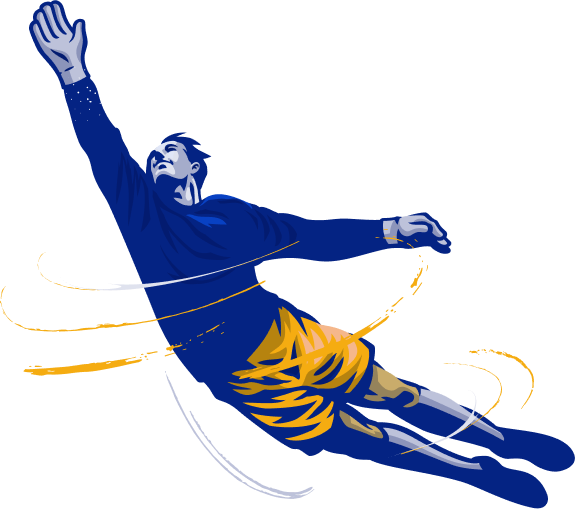

The impact of soccer as an art form extends beyond the field, as well. Soccer has inspired countless works of art, literature, film, and music, with artists and creators drawing on the sport's rich history, colorful characters, and universal themes to produce evocative works. From the poetry of Eduardo Galeano to the films of Ken Loach, soccer has permeated many facets of culture and society, further solidifying its status as "The Beautiful Game."
Football stadiums, too, can be considered works of art in their own right. These architectural marvels, such as Camp Nou, Wembley Stadium, and the Maracanã, provide the stage upon which soccer's greatest dramas unfold. The design of these stadiums not only facilitates the action on the field but also contributes to the atmosphere and emotion that make attending a soccer match such a unique and unforgettable experience.
Furthermore, soccer has given rise to numerous iconic moments that have transcended the sport and become ingrained in the collective memory of fans around the world. From Diego Maradona's "Hand of God" goal and his subsequent slaloming run through the England defense in the 1986 World Cup, to Zinedine Zidane's audacious volley in the 2002 UEFA Champions League Final, these moments have become synonymous with soccer's artistic expression and the limitless possibilities of the sport.
The emotional impact of football cannot be understated, as the sport has the power to elicit a wide range of feelings in both players and fans. The passion, joy, despair, and euphoria that soccer can generate is a testament to its artistic nature, as it captivates and moves people in a way that few other pursuits can match. Whether it is the exhilaration of a last-minute goal, the heartbreak of a penalty shootout defeat, or the pride of witnessing a local hero rise to the pinnacle of the sport, soccer has the power to touch people's lives and create memories that last a lifetime.
Football's status as an art form is firmly rooted in its fluidity, creativity, and emotional resonance. The sport's ability to showcase moments of individual brilliance, innovative tactics, and unforgettable drama has captured the imaginations of billions of people across the globe. As soccer continues to evolve and adapt, the artistry of "The Beautiful Game" will undoubtedly endure, captivating and inspiring future generations of players, coaches, and fans.



SCROLL
THE BEAUTIFUL GAME
1.4 Embracing the Spirit of the Game
At its core, football is more than just a sport; it is a reflection of the human spirit and a celebration of the values that define us. Fair play, teamwork, perseverance, respect, and humility are just some of the virtues that soccer embodies, shaping not only the players who participate but also the fans who support them. By embracing the spirit of the game, soccer transcends its status as a simple pastime and becomes a powerful force for personal growth, social cohesion, and positive change.


2.4 Embracing the Spirit of the Game


FAIR PLAY
Fair play is a cornerstone of soccer's ethos, emphasizing the importance of playing the game with integrity and respect for one's opponents. While winning is a natural objective for any competitive endeavour, soccer teaches that victories achieved through dishonesty or unsporting behaviour are ultimately hollow and unfulfilling. Through the culture of fair play, football promotes a sense of sportsmanship and camaraderie that extends beyond the field, reinforcing the belief that honesty, integrity, and respect are essential to success in all aspects of life.

TEAMWORK
Teamwork is another fundamental aspect of game's spirit, as the sport requires players to work together in order to achieve their goals. From complex passing moves to coordinated defensive efforts, soccer is a game that demands cooperation, communication, and mutual understanding. This emphasis on teamwork helps players develop essential interpersonal skills, such as empathy, trust, and adaptability, which are invaluable in both their personal and professional lives. Moreover, the bonds formed between teammates often transcend cultural, social, and political divides, demonstrating soccer's unique ability to unite people from diverse backgrounds and foster a sense of shared purpose.

PERSEVERANCE
Perseverance also sits at the core of soccer, reflecting the resilience and determination required to succeed in the face of adversity. Football is a game of constant challenges, with players routinely confronted by setbacks, such as injuries, defeats, and personal downturns in performance. By embracing these obstacles and striving to overcome them, soccer players cultivate the mental fortitude and grit needed to achieve their dreams, both on and off the field. The countless stories of players who have battled through adversity to reach the pinnacle of the sport serve as a testament to the power of perseverance and an inspiration to aspiring athletes everywhere.

RESPECT
Respect is an integral part of the game’s character, encapsulating the importance of treating one's opponents, teammates, coaches, and officials with dignity and consideration. Soccer teaches that while rivalries and competition can be fierce, they should never devolve into hostility or animosity. By fostering a culture of respect, soccer promotes tolerance, understanding, and appreciation for the efforts and contributions of others. This extends to the fans as well, with supporters expected to cheer for their teams passionately while also acknowledging the skill and dedication of their rivals.

HUMILITY
Humility is consider by most great players, coaches and fans a value embodied by the spirit of football, as the sport reminds players that success is often fleeting and that one should never become complacent or arrogant. Football's history is filled with tales of once-great teams and players who succumbed to hubris, only to be humbled by unexpected defeats or the emergence of new talents. Emphasizing the importance of humility, the game instills a sense of perspective and gratitude in its participants, encouraging them to recognize the transient nature of success and the importance of continuous self-improvement.
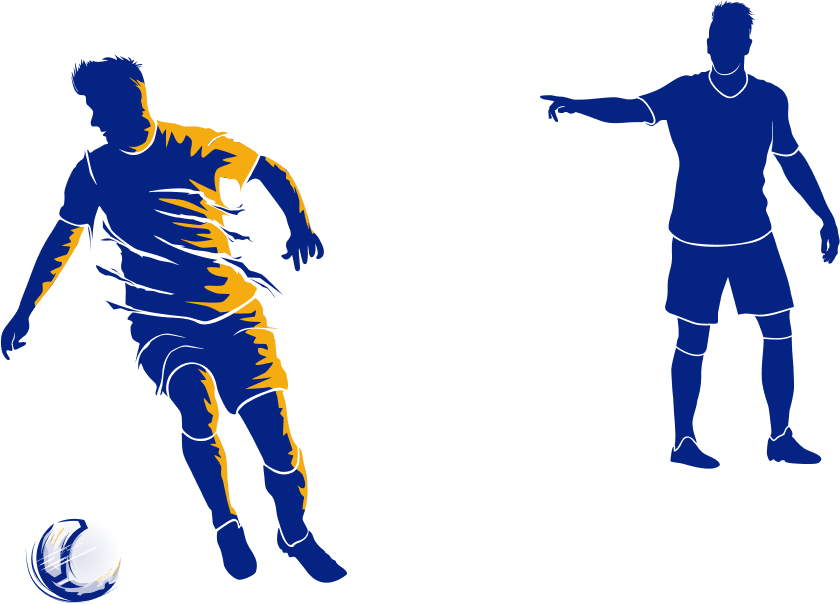


SCROLL
In addition to these core values, football’s ethos is also characterized by its capacity for joy, wonder, and inspiration. The game's most magical moments, such as stunning goals, improbable comebacks, and underdog triumphs, have the power to uplift and inspire, serving as a reminder of the beauty, creativity, and passion that define the human experience. By embracing the true nature of football, players and fans alike can experience a deeper connection to soccer and, by extension, to one another, fostering a sense of unity and shared celebration that transcends borders, languages, and cultures.
The essence of football also has the power to affect positive change in communities around the world. Many soccer clubs, organizations, and individual players engage in charitable initiatives and social programs aimed at improving the lives of those in need. Through these efforts, soccer demonstrates its potential to be a force for good, using its global appeal and influence to address pressing social issues, such as poverty, inequality, and discrimination. Players and fans can contribute to a more inclusive, compassionate, and just world.
Furthermore, soccer's spirit is embodied in its unwavering commitment to fostering inclusivity and diversity. The sport is accessible to people of all ages, genders, and abilities, with grassroots programs and initiatives aimed at promoting participation and breaking down barriers to entry. By emphasizing the importance of inclusivity and diversity, soccer sends a powerful message that everyone has a place in the game, regardless of their background or circumstances.
As we can see, the beautiful game is characterized by its emphasis on personal growth and development. By participating in the sport, players have the opportunity to learn valuable life lessons, such as discipline, dedication, and accountability, which can help them become well-rounded individuals. Moreover, soccer provides a platform for players to develop leadership qualities, emotional intelligence, and critical thinking skills, which are essential for success in various aspects of life.


SCROLL
Embracing the spirit of the game is a crucial aspect of becoming a successful football player and a well-rounded individual. Soccer's values of fair play, teamwork, perseverance, respect, and humility not only enhance the experience of participating in the sport but also enrich the lives of those who are part of the soccer community.
By fostering a culture of inclusivity, diversity, and social responsibility, soccer can continue to inspire, uplift, and unite people around the world, serving as a powerful testament to the enduring appeal and transformative potential of "The Beautiful Game."


THE BEAUTIFUL GAME
1.5 The Impact of Football on Society
As the world's most popular sport, football has a profound and far-reaching impact on society, beyond the boundaries of the field and permeating various aspects of culture, politics, and social life. From fostering a collective sense of belonging to promoting social inclusion and community engagement, the influence of soccer can be felt in countless ways, demonstrating the sport's unique power to inspire, unite, and transform.
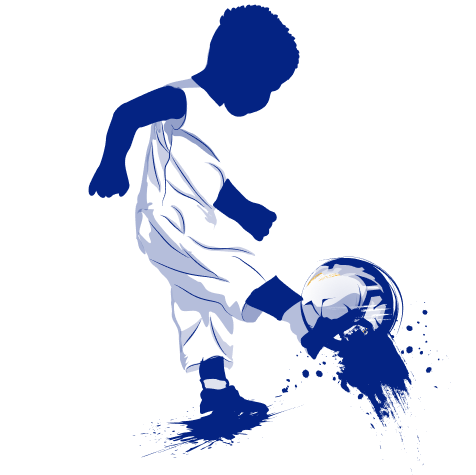

One of the most prominent ways in which soccer impacts society is by instilling a sense of national pride and identity. International competitions, such as the FIFA World Cup and the UEFA European Championship, provide an opportunity for nations to come together and celebrate their shared love of the sport. These tournaments not only showcase the skill and talent of soccer players from around the world but also serve as a platform for countries to express their cultural distinctiveness and national character. The pride and passion that fans exhibit during these events can promote a feeling of unity and togetherness, strengthening the ties that bond societies.
Football also has the power to foster social inclusion and bridge cultural divides. The sport's global appeal and accessibility make it an ideal vehicle for bringing people from diverse backgrounds together, encouraging mutual understanding and respect. Football clubs and organizations often engage in outreach programs and initiatives aimed at promoting inclusivity, such as providing equipment and coaching to underprivileged communities, organizing tournaments for disabled players, and partnering with charities and non-profit organizations to address social issues. Through these efforts, soccer can play a pivotal role in breaking down barriers, combating discrimination, and fostering social cohesion.
In addition to its role in promoting national pride and social inclusion, soccer can also serve as a catalyst for economic development and growth. The sport generates billions of dollars in revenue each year through ticket sales, merchandise, sponsorships, and broadcasting rights, providing a significant boost to local and national economies. Furthermore, major soccer events, such as the World Cup or the UEFA Champions League Final, can attract tourists and stimulate investment in infrastructure, creating jobs and contributing to the overall economic well-being of host cities and countries.
Soccer also has the potential to impact politics and diplomacy, as the sport can serve as a platform for international dialogue and cooperation. Football matches and tournaments often provide an opportunity for political leaders and diplomats to engage in discussions and negotiations, forging connections that can have far-reaching consequences.
The influence of the game on society can also be seen in the realm of culture and arts. The sport has inspired countless works of literature, film, music, and visual art, reflecting its deep connection to the human experience. Soccer-themed movies such as "Bend It Like Beckham," "The Damned United," and "Zidane: A 21st Century Portrait" explore themes of identity, ambition, and the nature of greatness, while musicians like New Order, and Shakira have penned anthems that capture the spirit and emotion of the sport. Through these artistic expressions, soccer's impact on society extends far beyond the field, enriching the cultural landscape and inspiring new generations of creators and fans.
Football can play a pivotal role in personal development and character-building. The sport teaches valuable life lessons and fosters the development of essential skills, such as teamwork, perseverance, and respect. By participating in soccer, players can cultivate discipline, self-confidence, and a strong work ethic, which can have a lasting impact on their personal and professional lives. The inspirational stories of soccer players who have overcome adversity, such as the rags-to-riches tales of Lionel Messi and Cristiano Ronaldo, serve as powerful examples of the transformative potential of the sport, encouraging aspiring athletes to pursue their dreams and strive for excellence.
The game's impact on society can also be seen in its ability to raise awareness and mobilize support for important social and environmental causes. Players and clubs often use their influence to advocate for issues such as education, healthcare, poverty reduction, and environmental conservation, leveraging their global reach to generate attention and funding for these initiatives. For example, the Common Goal movement, which encourages soccer players to donate a percentage of their salaries to charitable organizations, has raised millions of dollars for social and environmental projects around the world, demonstrating the sport's potential as a force for positive change.
In addition, football can serve as a powerful tool for community engagement and development. The sport provides a platform for people to come together, forge connections, and engage in collective action, fostering a sense of belonging and shared purpose. Soccer clubs and organizations often play a central role in their communities, hosting events, supporting local businesses, and contributing to the overall well-being of their neighbourhoods. By nurturing a sense of community and civic pride, soccer can have a profound and lasting impact on the social fabric of society.
Lastly, soccer can also play a role in promoting physical and mental well-being. The sport's emphasis on exercise, healthy competition, and camaraderie can contribute to improved physical health, reduced stress, and enhanced emotional resilience. Participation in football has been linked to numerous health benefits, such as improved cardiovascular fitness, increased muscle strength and flexibility, and reduced risk of chronic diseases. Furthermore, the sport's focus on teamwork and collaboration can help individuals develop strong social networks and support systems, which are critical to maintaining good mental health and overall well-being.


SCROLL
The impact of football on society is vast and multifaceted, touching on aspects of culture, politics, economics, and personal development.
As the world's most popular sport, soccer can continue to shape the course of human history and enrich the lives of countless individuals around the globe.


THE UNIVERSE OF FOOTBALL



CHAPTER
T
BALL
O
SEE
the
run after it, makes me the happiest man in the world.
TO

Maradona
Football holds a unique and unparalleled position in the global sporting landscape. It is a game that has transcended mere sport, weaving itself into the very fabric of societies and cultures worldwide.
The universality of soccer has led to an incredibly diverse and multifaceted world, where millions of people find common ground and shared passions.


Soccer's reach extends from the humble, local grassroots clubs where dreams and careers are born, right up to the glittering international stage where the best athletes in the world compete, displaying their impressive skills for us all to marvel at. Soccer's impact on our lives is profound, its presence powerful and unifying.
As we delve further into this book, we embark on a journey through various forms of the game. From the traditional, kinetic 11-a-side matches that encapsulate the heart of the sport, to smaller-sided games that offer a faster-paced, intensely tactical variation, and even to the adaptations crafted to ensure those with disabilities can also partake in the magic of the sport.
Our reading will also lead us to the foot of the world's most prestigious soccer competitions. The iconic FIFA World Cup, a dazzling tableau of cultures and nations united by the sport, and the UEFA Champions League, an exhilarating spectacle of soccer at its finest. We'll delve into the history, the prestige, and the cultural significance of these global tournaments that capture our collective imaginations time and again.
The exploration of the soccer universe would be incomplete without uncovering the indispensable roles played by participants such as players, coaches, referees, and fans. We'll delve into the dedication, passion, and commitment that each of these roles demands and celebrate the unique contributions they make to the sport we all cherish.
In this era of rapid technological progress, the beautiful game has not remained untouched. We'll discuss the impact of technology on soccer, from goal-line technology and Video Assistant Referees (VAR) that bring fairness and accuracy, to the advancements in sports science and data analytics revolutionising how teams train and strategize. We'll weigh the benefits against the challenges these innovations bring, and speculate on their potential implications for the future of soccer.
Finally, as we look towards the horizon, we'll explore the emerging trends and speculate on the future of soccer. We'll contemplate the growing importance of women's soccer and the rise of eSports, and the ways in which they could shape the development of the sport.

SCROLL
THE UNIVERSE OF FOOTBALL
2.1 Types of Football Games
Football is an incredibly versatile and adaptable sport, with countless variations and adaptations that cater to different cultures, environments, and preferences. Each variation of soccer offers unique challenges and opportunities, allowing players to develop a diverse range of skills and experiences that enrich their understanding and appreciation of the beautiful game.



11-A-SIDE
The traditional 11-a-side game is the most widely played and recognized form of soccer, featuring two teams of 11 players competing on a rectangular field with a goal at each end. Governed by the International Football Association Board (IFAB), 11-a-side game is played at all levels of the sport, from grassroots community leagues to the pinnacle of professional competition, such as the FIFA World Cup and UEFA Champions League.

FUTSAL
Next comes futsal, a fast-paced and skill-intensive form of indoor soccer that is played with a smaller, low-bounce ball and teams of five players. Futsal places a strong emphasis on ball control, precision passing, and creative playmaking, making it an excellent training ground for players looking to sharpen their technical skills and tactical awareness. With its origins in Uruguay and Brazil, futsal has gained global popularity and is now governed by FIFA and the Asociación Mundial de Futsal (AMF).

BEACH FOOTBALL
Beach football, also known as beasal, is another exciting variation of the game that has captured the imagination of players and fans around the world. Played on sandy beaches with teams of five players, beach soccer is characterized by its spectacular acrobatic moves, high-scoring games, and entertaining atmosphere. Governed by Beach Soccer Worldwide (BSWW) and FIFA, the sport features international competitions, including the FIFA Beach Soccer World Cup.

STREET FOOTBALL
Street football is a grassroots form of the game that is played in urban environments, often on concrete or asphalt surfaces with makeshift goals. Typically played with small teams or even one-on-one, street soccer is a testament to the adaptability of the sport and its ability to thrive in diverse environments. While not governed by a specific organization, street soccer has given rise to numerous local and international tournaments, as well as inspiring the freestyle soccer movement, which focuses on individual skill and creativity.

SMALL-SIDED GAMES
Small-sided games, such as 5-a-side, 6-a-side, or 7-a-side are played on smaller fields with reduced team sizes and often feature modified rules to encourage faster, more skill-based play. Small-sided games are popular at recreational level and are also used by professional teams as a training tool to improve players' technical abilities and tactical understanding.




SCROLL
Whether it's playing on a smaller pitch with fewer players, adjusting to different rules or conditions, or simply facing off against different opponents, every variation of football provides its unique set of challenges and opportunities.
The ability to excel in different football variations requires players to develop a range of skills beyond the traditional aspects of the game, such as agility, creativity, and adaptability, making football a truly dynamic and multifaceted sport.


THE UNIVERSE OF FOOTBALL
2.2 Football Competitions
Football is a global phenomenon, with numerous competitions taking place across different continents, countries, and levels of play. These competitions not only showcase the talents and skills of the players but also foster a sense of community, pride, and passion among fans, clubs, and nations.




FIFA WORLD CUP
The FIFA World Cup is the pinnacle of international football, held every four years and contested by national teams from around the globe.
Established in 1930, the tournament has grown to become the most prestigious and watched soccer event in the world, with billions of fans tuning in to witness history being made.
The World Cup comprises a qualification stage, which takes place over the two years leading up to the tournament, followed by a month-long competition involving 32 teams competing in a group stage and knockout rounds to determine the world champions.

UEFA EUROPEAN CHAMPIONSHIP
The UEFA European Championship, commonly referred to as the Euros, is a quadrennial international competition contested by European national
teams.
Founded in 1960, the tournament has grown in stature and popularity, with many considering it the second most prestigious international soccer event after the World Cup.
The Euros follow a similar format to the World Cup, with a qualification phase followed by a final tournament involving 24 teams competing in a group stage and knockout rounds.

COPA AMERICA
Copa America is the oldest international football tournament in the world, dating back to 1916. Held every four years, the competition features national teams from South America, with guest teams from other continents occasionally invited to participate.
The Copa America is an essential showcase for South American soccer talent, and the tournament has a storied history, featuring legendary players and memorable matches.

AFRICAN CUP OF NATIONS (AFCON)
Established in 1957, the African Cup of Nations is the premier international soccer competition in Africa.
Held every two years, the tournament features 24 national teams from across the continent, competing in a group stage and knockout rounds.
AFCON has been a launching pad for many African players who have gone on to achieve success in club soccer and gain international recognition.

AFC ASIAN CUP
The AFC Asian Cup is the most prestigious international soccer competition in Asia, founded in 1956.
Held every four years, the tournament features 24 teams from across the Asian Football Confederation, competing in a group stage and knockout rounds.
The Asian Cup has helped raise the profile of soccer in the region and has been a platform for Asian players to showcase their skills on the international stage.

CONCACAF GOLD CUP
The CONCACAF Gold Cup is the top international competition for teams from North America, Central America, and the Caribbean.
Held every two years, the tournament features 16 teams competing in a group stage and knockout rounds.
The Gold Cup serves as a significant opportunity for teams from the region to gain valuable international experience and compete against one another for regional supremacy.

FIFA CLUB WORLD CUP
The FIFA Club World Cup is an annual competition featuring club teams from each of the six continental confederations, along with the champion club from the host nation.
The tournament offers clubs the opportunity to compete against one another and claim the title of world champion. With clubs from various continents showcasing different styles of play and tactics, the Club World Cup provides an exciting platform for fans to witness top-level club soccer from around the world.

UEFA CHAMPIONS LEAGUE
The UEFA Champions League is the most prestigious club football competition in Europe and, arguably, the world. Featuring the top club teams from various European leagues, the tournament is held annually, with a group stage followed by knockout rounds.
The Champions League has become synonymous with the highest level of club soccer, featuring the best players and clubs in the world. The final, held in a different European city each year, is one of the most-watched sporting events globally, with millions of viewers tuning in to see which team will be crowned the European champion.

UEFA EUROPA LEAGUE
The UEFA Europa League is the second-tier club football competition in Europe, featuring clubs that have qualified through their domestic leagues or as runners-up in their domestic cup competitions.
Held annually, the tournament follows a similar format to the Champions League, with a group stage followed by knockout rounds. The Europa League offers clubs a chance to compete on the European stage and gain valuable experience, with the winner earning a place in the following season's UEFA Champions League.

DOMESTIC LEAGUES & CUPS
In addition to international and continental competitions, the game is played at various levels within individual countries, with domestic leagues and cup competitions providing the backbone of the sport. Some of the most famous domestic leagues include the English Premier League, Spanish La Liga, Italian Serie A, German Bundesliga, and French
Ligue 1. These leagues showcase the best club soccer within their respective countries and offer fans the opportunity to support their local clubs.

SCROLL
As we can see, football competitions around the world are diverse and varied, encompassing international tournaments, continental club competitions, and domestic leagues and cups.
These competitions not only showcase the immense talent within the sport but also serve to bring people together through a shared love of the beautiful game. As a fan, following these competitions can help broaden your understanding of the sport, its history, and its various nuances, ultimately enhancing your soccer IQ.


THE UNIVERSE OF FOOTBALL
2.3 The Football Ecosystem: Key Actors
Football is a global phenomenon, involving millions of individuals who assume a wide variety of roles, ultimately shaping the sport as we know it today. Let's delve into the multifaceted world of soccer actors, exploring their unique responsibilities and contributions to the sport and understanding how their collective efforts drive soccer's continued growth and success.

PLAYERS
At the core of football are the players, the talented individuals who take to the field, displaying their skills and passion for the game.
From young talents in grassroots clubs to seasoned professionals gracing the world's most prestigious leagues, soccer players dedicate countless hours to training, conditioning, and perfecting their craft.
The sport's beauty lies in the diversity of players, with each position requiring specific skills and attributes to excel, fostering a spirit of teamwork and collaboration.
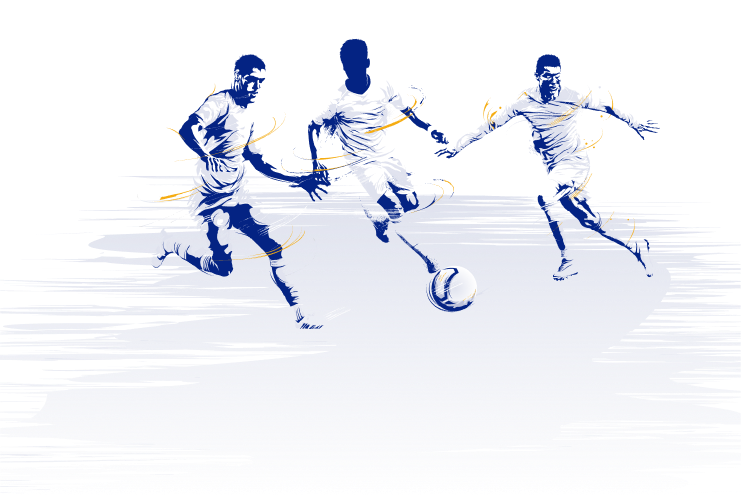

COACHES
Integral to soccer's landscape, coaches play a pivotal role in nurturing and developing players and orchestrating team success.
Tasked with teaching players the necessary techniques, tactics, and strategies, coaches must possess exceptional communication and leadership skills, motivating and guiding their players to reach their full potential.
The influence of a coach extends beyond the pitch, as they often shape a player's character and discipline, leaving a lasting impact on their lives and careers.


REFEREES
Charged with upholding the integrity of the game, referees ensure fair play and adherence to soccer's rules and regulations during matches.
They make critical decisions that can shape a game's outcome, such as awarding penalties, issuing yellow and red cards, and determining offside calls.
Referees must possess a comprehensive understanding of the game's rules, an ability to maintain impartiality under pressure, and excellent decision-making skills.
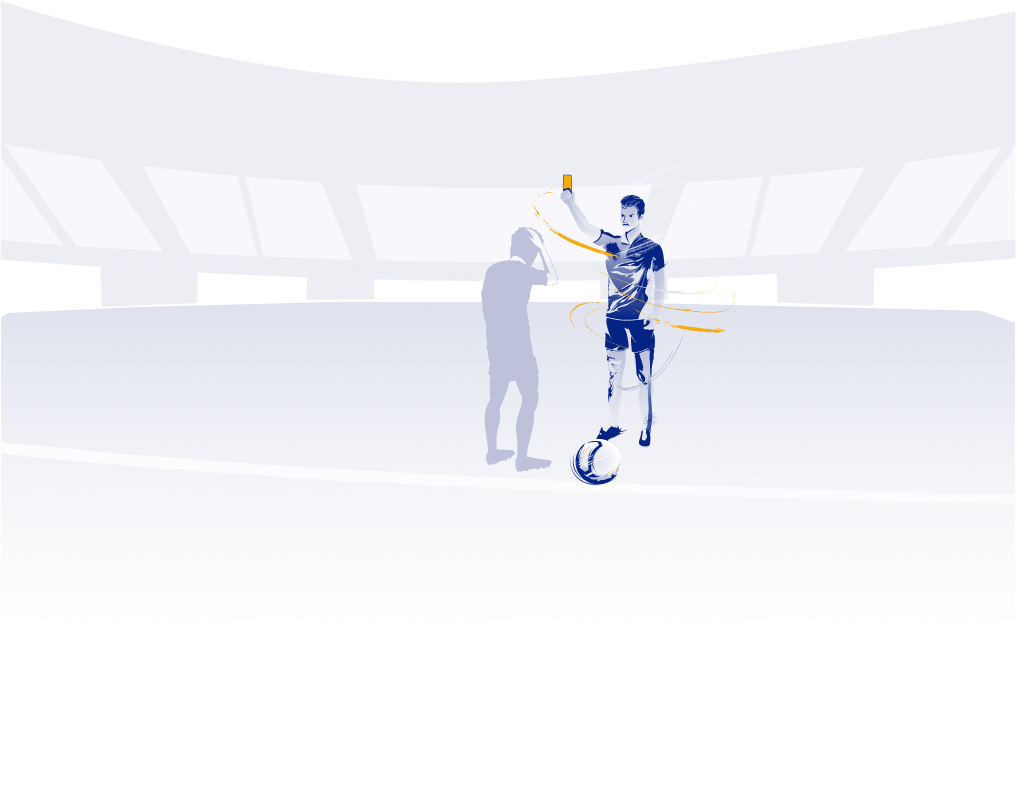

SUPPORT STAFF
Behind the scenes of every successful football team is a dedicated group of support staff, including assistant coaches, fitness trainers, physiotherapists, nutritionists, and team managers.
These individuals collaborate to ensure that players are in peak physical and mental condition, manage the administrative and logistical aspects of running a soccer team, and contribute to the overall success of the team.


FANS
Football fans form the backbone of the sport, providing the energy and atmosphere that create unforgettable soccer experiences.
From ardent supporters of local clubs to those who follow their national teams passionately, soccer fans play a critical role in the sport's popularity and growth, often driving the financial success of clubs and competitions.


FOOTBALL CLUBS & ORGANISATIONS
Football clubs and organisations, from grassroots clubs to professional leagues and governing bodies like FIFA and UEFA, are responsible for organising and regulating the sport at various levels.
These entities manage competitions, develop and nurture talent, and work tirelessly to promote soccer in their respective regions and worldwide.


MEDIA
The media plays a significant role in the world of football, providing comprehensive coverage, expert analysis, and insightful commentary on games and events.
Broadcasters, journalists, and commentators help to bring the excitement of soccer to audiences around the world, creating a shared experience that further fuels the sport's global appeal.


SPONSORS & PARTNERS
Sponsors and partners play an essential role in supporting the financial aspects of football, from grassroots initiatives to professional leagues and international competitions.
Their investments enable clubs and organizations to develop infrastructure, fund player development, and promote the sport on a global scale, shaping the future of soccer.


SCOUTS & RECRUITERS
Scouts and recruiters play a significant role in identifying and nurturing new talent. Their keen eye for potential, combined with their understanding of a team's needs and the intricacies of the sport, enables them to discover and recommend players who can strengthen and enhance a team's performance.
Scouts and recruiters travel far and wide, attending matches and monitoring youth academies to find the next generation of soccer stars.


PLAYER AGENTS
Player agents serve as intermediaries between soccer players and clubs, managing contract negotiations, transfers, and endorsements. They work to ensure that their clients receive the best possible deals and opportunities, offering guidance and support throughout a player's career.
Agents must possess excellent negotiation skills, an understanding of soccer's complex transfer market, and the ability to build relationships with clubs and players alike.


ANALYSTS & STATISTICIANS
With the increasing influence of data and analytics in soccer, analysts and statisticians play a crucial role in driving team success. By examining player and team performance data, these professionals help to identify trends, strengths, and weaknesses that can be used to inform coaching decisions, tactical approaches, and player development.
Soccer analysts and statisticians possess a unique blend of soccer knowledge and analytical expertise, transforming the way the game is played, understood, and appreciated.
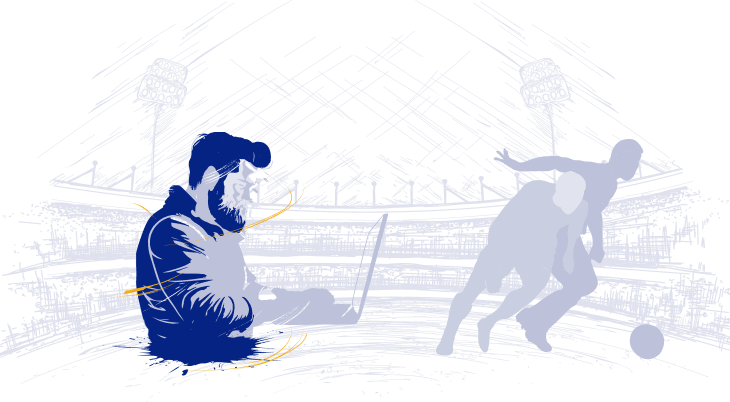

VOLUNTEERS
Soccer relies heavily on the dedication and hard work of countless volunteers who give their time and energy to support the sport at various levels.
From organising grassroots soccer programs to assisting with matchday operations at professional games, volunteers are the unsung heroes who make soccer accessible and enjoyable for all.

From the numerous roles and responsibilities of football actors, it becomes evident that soccer is much more than just a game played on a field.
It is a complex, interconnected ecosystem that thrives on the collective contributions of individuals from various walks of life. By appreciating the vital roles that each participant plays in the beautiful game, we can foster a greater sense of community and shared passion for the sport that unites us all.

SCROLL
THE UNIVERSE OF FOOTBALL
2.4 The Impact of Technology on Football
In the rich football history, the role of innovation and progress have always been interconnected, shaping the future of the beautiful game. The dawn of technological advancements in soccer can be traced back to the introduction of floodlights, which revolutionised the scheduling of matches, bringing the game into the realm of primetime television. As television coverage expanded, so did soccer's global reach, forging bonds between people and cultures who were once worlds apart.



In more recent years, the implementation of goal-line technology has been a game-changer, eliminating the ambiguity surrounding contentious goal decisions. Aided by a network of cameras and sensors, this technology has brought precision and fairness to the adjudication process, enhancing the integrity of the sport.
The emergence of Video Assistant Referee (VAR) technology, though not without controversy, has further refined the decision-making process on the field. By providing referees with access to video replays, VAR assists in reviewing contentious decisions, ensuring that the outcome of matches is determined by skill and strategy, rather than errors in judgement.
The digital era has also ushered in the age of sports analytics, with clubs increasingly relying on data to inform their tactical approach and player recruitment strategies. From sophisticated tracking systems that monitor player movements to artificial intelligence algorithms that can predict patterns of play, the marriage of technology and soccer has opened up new frontiers in performance analysis.
Moreover, technology has enriched the fan experience, both in the stadium and at home. Augmented reality, virtual reality, and interactive mobile applications have enabled supporters to immerse themselves in the game like never before, fostering an even deeper connection with their beloved teams and players.
However, as with any force of change, technology's impact on soccer comes with its challenges. The ongoing debate surrounding VAR, for instance, highlights the delicate balance between embracing innovation and preserving the essence of the game. Additionally, the rapid pace of technological advancements raises questions about accessibility, as not all clubs or countries may have the resources to adopt these cutting-edge tools.
It is a certitude that the impact of technology on football has been profound, ushering in a new era of precision, analysis, and fan engagement. As we continue to navigate this brave new world, it is incumbent upon us, the custodians of the beautiful game, to harness the power of technology responsibly, ensuring that it serves to enhance, rather than undermine, the spirit of football.

SCROLL
THE UNIVERSE OF FOOTBALL
2.5 The Future of Football: Emerging Trends
Football stands at a fascinating crossroads, with innovation and tradition poised to intersect in ways that will redefine the sport for future generations. One of the most prominent trends shaping the future of football is the increasing emphasis on sports science and injury prevention.
As the physical demands of the game continue to escalate, clubs are investing heavily in cutting-edge research to optimise player performance and reduce the risk of injury.



The development of wearable technology, such as GPS tracking devices and heart rate monitors, is a prime example of how data-driven insights are transforming the way players train, recover, and maintain peak fitness levels.
Another trend that is gaining traction in the football world is the growing focus on sustainable practices and eco-friendly initiatives. As the sport grapples with the challenges of climate change, clubs and governing bodies are taking decisive action to reduce their environmental impact. From constructing energy-efficient stadiums to adopting carbon-offsetting programmes, the future of football will be increasingly shaped by a commitment to sustainability and environmental stewardship.
The role of women in football is also undergoing a significant shift, with the women's game experiencing unprecedented growth and visibility. As investment in women's football continues to increase, so too does the level of competition and skill on display, challenging long-held assumptions about the sport's gender dynamics. The future of football will be marked by greater inclusivity and opportunities for female players, coaches, and administrators, as the sport embraces a more diverse and representative vision.
In the realm of football fandom, the emergence of digital platforms and social media has altered the way supporters engage with the sport. The rise of e-sports and virtual reality experiences offers new avenues for fans to connect with their favourite teams and players, fostering a global community united by a shared love of the game. As technology continues to evolve, the fan experience will become increasingly immersive and interactive, blurring the lines between the digital and physical worlds.
The future of football will be shaped by the ongoing quest for fair play and integrity in the sport. As recent scandals have highlighted the need for greater transparency and accountability, the football community must confront issues such as match-fixing, corruption, and discrimination head-on. The adoption of robust governance structures and the promotion of ethical conduct will be critical to preserving the credibility and spirit of the game.
As we gaze towards the future, it is vital for us to welcome these emerging trends with a receptive attitude and a sense of interest, guaranteeing that the sport of football thrives and continues to captivate individuals globally, engaging both their emotions and intellect.


SCROLL
UNDERSTANDING THE GAME


CHAPTER
I
PERFECTIONIST
AM
NOT A
I like to feel that things are done well. More important than that, I feel an endless need to learn, to improve, to evolve.
BUT

Cristiano Ronaldo

As we delve deeper into the world of football, it becomes apparent that a solid grasp of the sport's fundamentals is crucial to your success, both as a player and as an enthusiast. This chapter will serve as your guide to comprehending the essential aspects of the game, providing you with a strong foundation on which to further build your football IQ.




To begin, we will explore the rules and regulations governing soccer, where we will cover everything from the dimensions of the field and its markings to the roles and responsibilities of each player on the pitch. We will also discuss the duration of matches, how tiebreakers are handled, and the various fouls, penalties, and disciplinary actions that can occur during a game.
A particular focus is given to the offside rule, which is often misunderstood, as well as the different types of set-pieces such as free kicks, corner kicks, penalty kicks, and throw-ins.
Further, we will delve into the various player positions and roles found in football. Starting with goalkeepers, we then move on to defenders, discussing the center-backs and full-backs, followed by midfielders, where we cover defensive, central, attacking, and winger roles. Finally, we will discuss forwards, including strikers, false nines, and target men.

UNDERSTANDING THE GAME
The flow of the game and its phases can be considered the heartbeat of soccer, as it is through these pulsating rhythms that the sport comes to life. Football is a dynamic, ever-changing game, with each moment presenting unique challenges and opportunities. By delving into the depths of these diverse phases, players can anticipate the unfolding scenarios and respond accordingly, ensuring they are always primed for the twists and turns of the game.
3.1 The Flow of the Game




A typical football match consists of two halves of 45 minutes each, separated by 15-minute halftime interval that allows players to rest and strategise. On certain occasions, such as during the knockout stages of a tournament, extra time and penalty shootouts may be required to determine the victory. The cadence of the game is influenced by these temporal constraints, as well as the actions and decisions executed by both sides.
Throughout the course of a match, the game tends to oscillate between four distinct phases: build-up, attack, defence, and transition. Each phase necessitates a different set of skills, tactics, and strategies, making it crucial for players to learning their roles and responsibilities for each stage of the match.




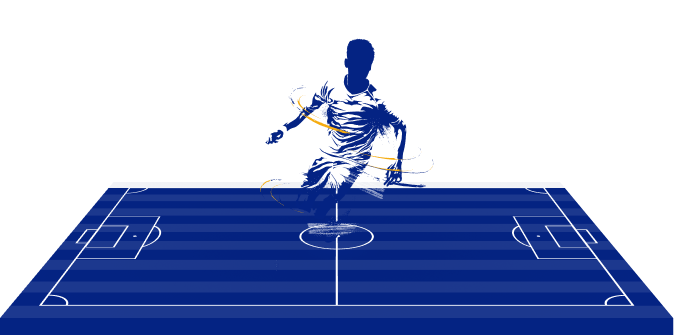
The build-up phase transpires when a team is in possession of the ball, endeavouring to advance up the pitch. This stage is characterised by measured, deliberate play, with short passes and a steady progression as the team seeks to create space and discover openings in the opposition's defense.
Effective communication, spatial awareness, and technical ability are indispensable during the build-up, as players must collaborate to maintain possession and progress towards the attacking third.

BUILD-UP PHASE

ATTACK PHASE
The attack phase commences once a team has successfully penetrated the opposition's defensive line and is now poised to create goal-scoring opportunities.
This phase can encompass swift, incisive passing, individual dribbling feats, and well-timed runs from attacking players.
The objective during this phase is to catch the opposition unaware, exploit vulnerabilities in their defensive configuration, and ultimately, find the back of the net.

DEFENSE PHASE
In contrast, the defense phase comes into play when a team is robbed of the ball and must endeavour to regain possession or counter the opposition's goal-scoring attempts.
Defending players must remain organised, preserve their formation, and communicate effectively to minimise the attacking menace posed by their adversaries. Successful defending hinges on a combination of individual tackling, intercepting passes, and collective endeavours to prevent the opposition's offensive manoeuvres.

TRANSITION PHASE
Lastly, the transition phase embodies the moments when the game pivots from one phase to another, such as from defense to attack or vice versa.
This phase is often characterized by rapid shifts in pace and direction, as teams attempt to capitalise on the sudden moments of disorder that can occur during these transformations. Prompt decision-making, anticipation, and accurate passing are crucial during transitions, as they can frequently lead to scoring opportunities or prevent dangerous counterattacks.

SCROLL

Grasping the intricacies of the game's flow and its diverse phases empowers players to adapt their gameplay and make informed decisions on the pitch. By mastering the nuances of each phase and recognising the pivotal moments that can sway the balance of a match, players can elevate their performance and contribute significantly to their team's overall success.
Grasping the intricacies of the game's flow and its diverse phases empowers players to adapt their gameplay and make informed decisions on the pitch. By mastering the nuances of each phase and recognising the pivotal moments that can sway the balance of a match, players can elevate their performance and contribute significantly to their team's overall success.
Grasping the complexities of the game's flow and its diverse phases empowers players to adapt their gameplay and make informed decisions on the pitch. By mastering the nuances of each phase and recognising the pivotal moments that can change the balance of a match, players can elevate their performance and contribute significantly to their team's overall success.




Grasping the intricacies of the game's flow and its diverse phases empowers players to adapt their gameplay and make informed decisions on the pitch. By mastering the nuances of each phase and recognising the pivotal moments that can sway the balance of a match, players can elevate their performance and contribute significantly to their team's overall success.
Grasping the intricacies of the game's flow and its diverse phases empowers players to adapt their gameplay and make informed decisions on the pitch. By mastering the nuances of each phase and recognising the pivotal moments that can sway the balance of a match, players can elevate their performance and contribute significantly to their team's overall success.
UNDERSTANDING THE GAME
Football is a complex game with a rich history and a diverse set of rules and regulations. While the basic premise of the game is simple – to score more goals than the opposing team – the nuances of soccer's rules can be intricate and often evolve over time.
3.2 Rules & Regulations

Soccer is played on a rectangular field, also known as a football pitch, which is typically between 100-110 meters long and 64-75 meters wide, although these dimensions can vary slightly depending on the level of play and specific competition requirements. The field is divided into two halves and is marked with boundary lines, a center line, and two penalty areas. At each end of the field, there is a goal measuring 8 feet high and 8 yards wide, situated on the goal line. Corner flags are placed at each corner of the field, and a center circle with a 10-yard radius surrounds the center spot where kickoffs take place.

THE FOOTBALL PITCH
A football team consists of 11 players, including a goalkeeper, defenders, midfielders, and forwards. Each position has specific roles and responsibilities within the team's overall tactical approach. The goalkeeper's primary role is to prevent the opposing team from scoring by blocking shots and making saves, while defenders are tasked with marking opponents, tackling, and intercepting passes. Midfielders serve as the link between defense and attack, controlling the game's tempo and creating opportunities for forwards, who are responsible for scoring goals and exploiting space in the opposition's defense.

THE FOOTBALL TEAM
A game match consists of two halves, each lasting 45 minutes, with a
15-minute halftime break in between. The team that scores the most goals within the 90-minute timeframe is declared the winner. If the score is level at the end of regulation time, the game may be decided by extra time (two additional 15-minute halves) or a penalty shootout, depending on the specific competition rules.

THE GAME MATCH
Well-defined rules are created for fouls and penalties, which are designed to ensure fair play and player safety. Common fouls include tripping, pushing, holding, and dangerous play. Depending on the severity of the offense, the referee can award a free kick or penalty kick to the fouled team or issue a yellow card (caution) or red card (sending off) to the offending player. A player who accumulates two yellow cards in a single match is automatically shown a red card and must leave the field, leaving their team with one fewer player for the remainder of the game.

FOULS & PENALTIES
The offside rule is one of the most critical and often misunderstood aspects of the game. A player is deemed offside if they are nearer to the opponent's goal line than both the ball and the second-to-last defender (usually the last outfield player) at the moment the ball is played to them by a teammate. It is important to note that a player cannot be offside when receiving the ball directly from a goal kick, corner kick, or throw-in. If an attacking player is judged to be offside, the opposing team is awarded an indirect free kick from the spot where the offside player was positioned when the ball was played.

THE OFFSIDE RULE
Set-pieces are a crucial part of football and can often lead to goal-scoring opportunities. They include free kicks, which are awarded for fouls and other infringements, corner kicks, which are given when the defending team plays the ball over their goal line, and penalty kicks, which are awarded when a defending player commits a foul within their own penalty area.
Throw-ins are another type of set-piece, occurring when the ball completely crosses the sideline; the team that did not touch the ball last is allowed to throw it back into play. Each type of set-piece has its own specific rules and regulations governing how the ball is put back into play and how opposing players must position themselves.
Free kicks can be either direct or indirect. In a direct free kick, the player taking the kick can shoot directly at the goal, while in an indirect free kick, the ball must touch another player before a goal can be scored. Opposing players must maintain a distance of at least 9.5 meters from the ball during a free kick.
Corner kicks are awarded when the defending team last touches the ball before it crosses their own goal line, outside of the goal posts. The attacking team takes the corner kick from the corner nearest to where the ball went out of play. Players from the defending team must be at least 11 meters away from the ball when the corner kick is taken.
Penalty kicks are awarded when a defending player commits a foul within their own penalty area. The penalty kick is taken from the penalty spot, 11 meters from the goal line and equidistant from the goalposts. The goalkeeper must remain on their goal line, facing the kicker, until the ball is kicked.

SET PIECES






SCROLL

Grasping the intricacies of the game's flow and its diverse phases empowers players to adapt their gameplay and make informed decisions on the pitch. By mastering the nuances of each phase and recognising the pivotal moments that can sway the balance of a match, players can elevate their performance and contribute significantly to their team's overall success.
Grasping the intricacies of the game's flow and its diverse phases empowers players to adapt their gameplay and make informed decisions on the pitch. By mastering the nuances of each phase and recognising the pivotal moments that can sway the balance of a match, players can elevate their performance and contribute significantly to their team's overall success.
The fundamental rules and regulations of football are important for aspiring players to develop a strong foundation for their game, ensuring they play within the sport's guidelines and can effectively navigate the various situations that may arise during a match. This knowledge will not only help players avoid penalties and disciplinary actions but also enable them to maximize their potential on the field, taking advantage of set-pieces and other key moments in the game to create scoring opportunities and secure victories for their team.

UNDERSTANDING THE GAME
Football is an energetic and captivating game, with each player on the field having a specific role and set of responsibilities. Understanding the various player positions and their functions is crucial for aspiring players, as it will help them develop their skills, contribute effectively to their team, and ultimately, excel in their chosen position.
3.3 Player Positions & Roles
The goalkeeper, the final bastion of defense and the sole player on the field allowed to use their hands within their penalty area, is tasked with stoping the opponent's attempts to score. They achieve this by blocking shots, making saves, and organising the defense. The goalkeeper's duties include shot-stopping, commanding the penalty area, accurate distribution, and confident decision-making.

GOALKEEPERS

Defenders are primarily responsible for preventing the opposition from scoring goals. There are three types of defenders: center-backs, full-backs, and wing-backs. Center-backs are the tallest and strongest players on the team, tasked with winning aerial duels, making tackles, blocking shots, and marking opposing forwards during set-pieces. Full-backs operate on either side of the center-backs, defending against opposition wingers, and supporting the attack by overlapping with their own team's wide midfielders or forwards. Wing-backs are similar to full-backs, but are used in formations with three center-backs. They have a more attacking role and are expected to contribute both defensively and offensively, providing width and making overlapping runs down the flanks.
DEFENDERS
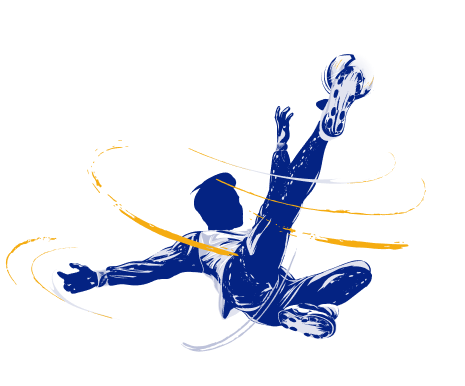
Midfielders are responsible for controlling possession, creating goal-scoring opportunities, and breaking up opposition play. The three types of midfielders are defensive midfielders, central midfielders, and attacking midfielders. Defensive midfielders shield the defense by breaking up opposition attacks, intercepting passes, and making tackles. Central midfielders have a more balanced role, contributing to both defense and attack, and are often responsible for controlling the tempo of the game. Attacking midfielders play behind the forwards and are responsible for creating goal-scoring opportunities through incisive passes, dribbling, and long-range shooting.

MIDFIELDERS

Forwards, also known as strikers or attackers, are primarily responsible for scoring goals and exploiting space in the opposition's defense. There are three types of forwards: center-forwards, wingers, and second strikers. Center-forwards are the team's focal point in attack, tasked with scoring goals and possessing excellent finishing skills, aerial ability, and the strength to hold off defenders while bringing teammates into play. Wingers provide width to their team's attack and create goal-scoring opportunities through crosses, dribbling, and cutting inside to shoot. Second strikers play just behind the main forward and are often a more creative player, tasked with creating scoring opportunities for both themselves and their teammates, linking the midfield and attack, and exploiting space between the opposition's defense and midfield.

FORWARDS

A thorough understanding of the various player positions and their roles within a team is crucial for aspiring footballers. By concentrating on the skills and responsibilities associated with their chosen position, players can develop a more profound understanding of the game, enhance their overall performance, and contribute more effectively to their team's success. Moreover, it is essential for players to develop versatility and adaptability, as contemporary football often necessitates players to be comfortable in multiple positions and to switch roles within a game, depending on their team's tactical approach and the specific demands of a match situation.

SCROLL


Grasping the intricacies of the game's flow and its diverse phases empowers players to adapt their gameplay and make informed decisions on the pitch. By mastering the nuances of each phase and recognising the pivotal moments that can sway the balance of a match, players can elevate their performance and contribute significantly to their team's overall success.
Grasping the intricacies of the game's flow and its diverse phases empowers players to adapt their gameplay and make informed decisions on the pitch. By mastering the nuances of each phase and recognising the pivotal moments that can sway the balance of a match, players can elevate their performance and contribute significantly to their team's overall success.
UNDERSTANDING THE GAME
Football is a fast-paced spectacle and complex sport that involves various strategic and tactical considerations. As aspiring soccer players seek to improve their understanding of the game, they must familiarize themselves with the theoretical foundations of formations and tactics. Let's uncover the theoretical overview of soccer formations and tactics, while examining the principles behind these strategies and how they contribute to the overall structure and style of play in a match.
3.4 Formations & Tactics
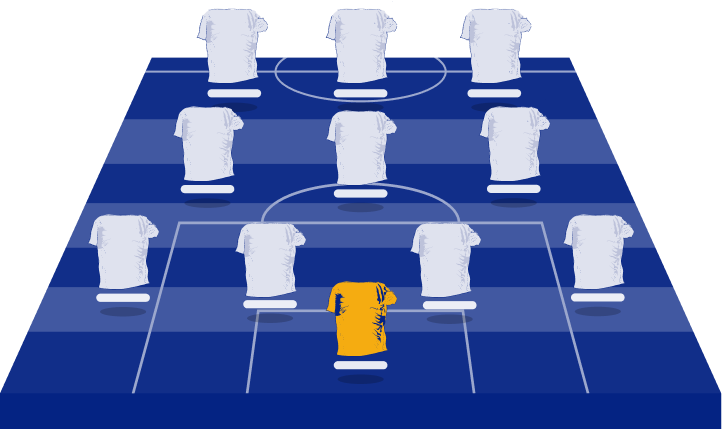
At the core of any football team's tactical approach is its team formation, which plays a crucial role in determining a team's tactical approach to a match. Over the years, various formations have been developed and refined, each with its unique tactical implications. Soccer players and coaches must be familiar with these formations to better understand the strategic nuances of the game.
The 4-4-2 formation is one of the most popular formations used in soccer. It consists of four defenders, four midfielders, and two forwards. This formation is considered balanced and versatile, adaptable to various playing styles and provides a strong defensive foundation.
Another common formation is the
4-3-3 formation, which features four defenders, three midfielders, and three forwards. This formation is characterized by its attacking focus, with the three forwards providing a constant threat to the opposition's defense. However, the midfield can be outnumbered in certain situations, requiring strong defensive work from the wide forwards.
The 3-5-2 formation is another popular choice, consisting of three central defenders supported by two wing-backs responsible for providing width in both attack and defense. This formation can be effective in controlling the midfield and creating overloads in wide areas but can be vulnerable to attacks down the flanks if the wing-backs are caught out of position.
Lastly, the 4-2-3-1 formation is a commonly used formation by teams looking to maintain possession and control the midfield. It consists of four defenders, two defensive midfielders, three attacking midfielders, and a lone forward. The two defensive midfielders provide a strong shield in front of the back four, while the three attacking midfielders can interchange positions and create chances for the forward. However, the lone striker may become isolated if the team struggles to maintain possession.

TEAM FORMATION
The strategy spectrum in soccer ranges from defensive to offensive approaches. Defensive tactics often involve a compact formation with more players in deeper positions, prioritizing the prevention of goals and denying space to the opposition. In contrast, offensive tactics are characterized by a more expansive formation, with players positioned higher up the pitch to create goal-scoring opportunities.
Understanding the balance between offense and defense is critical for aspiring soccer players, as it allows them to appreciate the strategic trade-offs involved in different tactical approaches. Additionally, the tactical spectrum is not fixed; teams can shift their tactical orientation throughout a match in response to various factors, such as the opposition's tactics, the match situation, and specific game objectives.

STRATEGY SPECTRUM
Several key principles underpin the tactical aspect of soccer. These principles provide the foundation for various strategies and decision-making processes during a match.
Space is critical in soccer, as it determines the availability of passing options and the movement of players. By creating space, teams can generate attacking opportunities and disrupt the opposition's defensive structure.
Pressing refers to the act of applying pressure on the opposition when they have possession of the ball. Effective pressing requires coordinated movement and communication among players, as well as an understanding of the opposition's tendencies and potential weaknesses.
Transition refers to the change between offense and defense (and vice versa) during a match. Effective transitions are crucial for teams to exploit the disorganization of the opposition and capitalize on temporary numerical advantages.
Compactness is the degree to which a team's players are positioned closely together on the field. A compact formation can make it more difficult for the opposition to penetrate the defensive structure, as it reduces the space between players and forces the opposition to play through congested areas.
Width and depth are essential aspects of soccer tactics that affect both offensive and defensive play.
The tempo of a soccer match refers to the speed at which the game is played. Teams can vary their tempo to control the flow of the match, disrupt the opposition's rhythm, and adapt to different game situations.

KEY TACTICAL PRINCIPLES

SCROLL
Grasping the intricacies of the game's flow and its diverse phases empowers players to adapt their gameplay and make informed decisions on the pitch. By mastering the nuances of each phase and recognising the pivotal moments that can sway the balance of a match, players can elevate their performance and contribute significantly to their team's overall success.
Grasping the intricacies of the game's flow and its diverse phases empowers players to adapt their gameplay and make informed decisions on the pitch. By mastering the nuances of each phase and recognising the pivotal moments that can sway the balance of a match, players can elevate their performance and contribute significantly to their team's overall success.
By understanding the theoretical underpinnings of football formations and tactics, you can develop a deeper appreciation for the game's strategic nuances. This knowledge enables players to adapt to various tactical systems, enhance their decision-making abilities on the field, and contribute effectively to their team's overall performance. Furthermore, studying different formations and tactics will also help players recognize the strengths and weaknesses of their opposition, allowing them to exploit vulnerabilities and adapt their own approach accordingly. Ultimately, a thorough grasp of soccer's tactical framework is an essential aspect of becoming a successful and well-rounded player.




UNDERSTANDING THE GAME
3.5 Team Dynamics & Strategies

Football is a sport that relies heavily on teamwork, and understanding the complexity of team dynamics and strategies is crucial. Let’s explore the significance of team dynamics, the various strategies employed by teams, and how these elements contribute to the overall success of a football side.
Team dynamics refers to the inter-personal relationships, communication, and collective behaviour of a group of individuals working towards a common goal. In football, strong team dynamics can lead to improved performance on the pitch, as players who trust and understand one another are better equipped to execute their game plan effectively. On the other hand, poor team dynamics can result in disjointed play, breakdowns in communication, and ultimately, subpar performance.
A positive team culture is built on mutual respect, open communication, and a shared commitment to the team's goals. Coaches play a significant role in fostering a constructive environment by setting expectations, promoting accountability, and encouraging collaboration among players. Additionally, team leaders can set the tone by modelling the desired behaviours and values, which can have a ripple effect on the rest of the squad.

SCROLL
A football team's strategy is the overarching approach it employs to achieve success on the pitch. This includes the formation, playing style, and tactical decisions made during the course of a match. While numerous strategies exist, some of the most prevalent include:

SCROLL
This Dutch-originated philosophy emphasises versatility, fluidity, and ball possession. Players are expected to interchange positions and contribute to all phases of play, creating a dynamic and unpredictable style.

TOTAL FOOTBALL
Popularised by Spanish and Barcelona teams, Tiki-Taka is characterised by short, precise passing and maintaining possession. This approach requires exceptional technical skill and spatial awareness, as players aim to break down the opposition's defence through intricate passing patterns.

TIKI-TAKA
This Italian defensive strategy focuses on a well-organised and disciplined defense. Teams employing Catenaccio often rely on counter-attacks and set-pieces to score goals while maintaining a compact defensive shape to defeat the opposition.

CATENACCIO
This German approach involves intense, high-pressure defending immediately after losing possession. The objective is to win the ball back quickly and exploit the disorganised opposition with rapid transitions to attack.

GEGENPRESSING
In addition to selecting a primary strategy, football teams must also be capable of adapting their approach to suit the strengths and weaknesses of their opponents. This may involve making tactical adjustments, such as altering the formation, pressing intensity, or defensive line's positioning. Coaches and players must be well-versed in various strategies and tactics to make informed decisions during a match effectively.
The team dynamics and strategies are critical components of success in football. By fostering a positive team culture and developing a deep understanding of various strategies, players and coaches can significantly enhance their chances of achieving victory on the pitch.




SCROLL
THE DEVELOPMENT JOURNEY


CHAPTER
I
MORNING
GET
UP
in the
I go to practice like everyone else
AND

Kylian Mbappé

The journey to becoming a successful football player is not a straightforward one; it requires dedication, perseverance, and an unwavering passion for the beautiful game. From grassroots football to the elite echelons of the sport, each stage of a player's development presents unique challenges and opportunities for growth. Let’s look into various stages of the development pathway, providing insights into the essential components of nurturing talent and progressing through the ranks of the football world.
Grassroots football forms the bedrock of the football pyramid, fostering a love for the game and providing a platform for young talents to showcase their skills. Local clubs, community programmes, and school teams serve as the primary conduits for budding footballers, offering invaluable coaching, camaraderie, and competitive experience. We will delve into the importance of grassroots football in nurturing talent, the role of coaches and mentors, and the crucial aspects of player development at this foundational stage.
For those who demonstrate exceptional promise, entry into a professional club's youth academy represents a significant milestone in their football journey. These academies offer a highly structured environment, marrying formal education with rigorous football training, and exposing players to a more competitive atmosphere. In this segment, we will explore the inner workings of youth academies, the importance of balancing academics with sport, and the role of specialised coaching in honing a player's skills and tactical understanding.
The transition to semi-professional or professional football represents the realisation of a dream for many aspiring footballers. At this level, the stakes are higher, the competition is fiercer, and the demands on a player's time and energy are more exacting. We will cover the challenges and opportunities associated with semi-professional and professional football, the importance of physical and mental preparation, and the role of agents, contracts, and the media in shaping a player's career trajectory.
Even at the pinnacle of the football pyramid, the quest for improvement and self-actualisation never ceases. Elite players continually strive to hone their skills, adapt to new tactical approaches, and maintain peak physical condition. We will examine the key components of ongoing development and career longevity, including the significance of nutrition, fitness, and injury prevention, as well as the importance of cultivating a strong support network and maintaining a growth mindset.
As the sun sets on a player's career, numerous opportunities in coaching, consulting, and administration await those who wish to remain connected to the football universe. We will discuss the various avenues available to retired players, the skills and qualifications required to excel in these roles, and the importance of planning for life after football.
By understanding the development pathway and its various stages, aspiring footballers can forge their own unique journey, embracing the challenges and rewards that accompany each step. Remember that success is not solely measured by the number of trophies amassed or records broken, but by the memories created, friendships forged, and the lasting impact you leave on the football landscape.



SCROLL

THE DEVELOPMENT JOURNEY
Grassroots football is the foundation upon which the beautiful game is built. It is the starting point for countless players who dream of pursuing a career in football, and it is a critical stage in the development journey. This level of football is where the seeds of passion and talent are nurtured, providing a vital learning environment that fosters the growth of essential skills and instils values such as teamwork, discipline, and fair play.
4.1 Grassroots Football



Grassroots football encapsulates various forms of the game, including amateur leagues, local clubs, and school teams, which cater to a diverse range of ages, abilities, and backgrounds. It is the beating heart of football, with millions of participants taking part in grassroots activities across the globe. The accessibility and inclusivity of grassroots football ensure that everyone has the opportunity to experience the joy of playing, regardless of their skill level or previous experience.
At the grassroots level, the focus is on developing foundational skills, building a strong understanding of the game, and fostering a love for football. Young players are exposed to the fundamentals of the sport, including ball control, dribbling, passing, and shooting, as well as tactical and positional awareness. Moreover, grassroots football introduces players to the importance of teamwork, communication, and sportsmanship, which are valuable lessons both on and off the field.
The role of coaches, parents, and volunteers in grassroots football cannot be understated. Their support, guidance, and encouragement are crucial in nurturing the potential of young players and creating a positive, enjoyable atmosphere in which to learn and grow. Furthermore, these individuals often act as role models, instilling the values and behaviours that help shape the character of aspiring footballers.
As players progress through the grassroots ranks, they may have the opportunity to advance to higher levels of competition, such as regional, national, or even professional leagues. This progression can be facilitated through scouting networks, talent identification programmes, and football academies, which seek to uncover and develop the next generation of football stars. However, it is essential to remember that the primary goal of grassroots football is to foster a lifelong love for the game and promote the physical, mental, and social benefits it offers to all who participate.
Grassroots football is a crucial component of the development journey for any aspiring football player. It serves as a breeding ground for talent, provides an accessible and inclusive environment for learning, and instils the values and skills necessary for success both on and off the field. By investing in grassroots football, we are not only nurturing the future stars of the sport but also fostering a vibrant football community that can thrive for generations to come.


SCROLL

Academies and youth development programmes play a pivotal role in the progression of aspiring footballers, providing a structured and professional environment in which they can sharpen their skills and pursue their dreams. As players graduate from grassroots football, academies offer a crucial stepping stone towards higher levels of competition and the potential for a professional career.

THE DEVELOPMENT JOURNEY
4.2 Academies & Youth Development


Football academies are specialised institutions, often affiliated with professional clubs, dedicated to the development of young talent. They offer a comprehensive and rigorous training regime, incorporating technical, tactical, physical, and psychological elements, designed to maximise the potential of each player. By providing access to top-level coaching, state-of-the-art facilities, and competitive fixtures, academies aim to create an optimal environment for growth and learning.
The recruitment process for academies can be highly selective, with scouts and talent identification programmes scouring the grassroots scene for promising players. This process may involve trials, assessments, and interviews, with only the most talented and dedicated individuals securing a place within an academy's ranks. Once enrolled, players embark on a carefully planned development pathway, with the ultimate goal of progressing to the professional ranks.
In addition to football-specific skills and knowledge, academies place a strong emphasis on the personal and academic development of their players. This holistic approach recognises the importance of education, character development, and mental wellbeing in producing well-rounded individuals who can thrive both on and off the field. Consequently, players often engage in a range of activities, including classroom-based learning, personal development workshops, and community outreach projects, which complement their football education.
Competition is a fundamental aspect of the academy experience, with players regularly participating in matches and tournaments against their peers. This exposure to high-level competition not only tests and refines their skills but also fosters resilience, determination, and a winning mentality. Furthermore, these competitive encounters serve as a valuable platform for showcasing talent, allowing players to catch the eye of scouts, agents, and coaches from professional clubs.
The success of academies and youth development programmes is evident in the number of graduates who have made the transition to the professional game. Many of the world's top footballers, such as Lionel Messi, Cristiano Ronaldo, and Kylian Mbappé, have emerged from academy systems, demonstrating the effectiveness of this approach in nurturing elite talent. Moreover, the continued investment in youth development by clubs and governing bodies ensures that football will remain a vibrant and dynamic sport for generations to come.
The academies and youth development programmes are essential components of the football development journey, bridging the gap between grassroots and professional football. By offering a structured, professional, and holistic approach to player development, these institutions help to mould the stars of tomorrow and secure the future of the beautiful game. The success of academy graduates on the global stage serves as a testament to the importance and effectiveness of these programmes in shaping the football landscape.



SCROLL

The transition from youth football to the adult game is a significant milestone in a player's development journey. As they progress through the ranks, aspiring footballers will encounter new challenges and opportunities, often involving the move from amateur or semi-professional football to fully professional levels. Let’s delve into the key aspects of semi-professional and professional football, including the differences between the two, the pathways to success, and the experiences of those who have made the leap.
THE DEVELOPMENT JOURNEY
4.3 Semi-Professional & Professional Football



Semi-professional football occupies a unique position within the football pyramid, providing a stepping stone for players striving to reach the professional ranks. At this level, players often balance their football commitments with other employment or educational pursuits, receiving a modest income from their sporting activities. Semi-professional clubs are typically found in the lower tiers of national league systems, offering a competitive environment in which players can develop their skills and gain valuable experience.
The transition to professional football represents a significant shift in both lifestyle and expectations. Professional players are typically employed on a full-time basis, dedicating their entire working week to the pursuit of excellence in their chosen sport. This commitment involves rigorous training schedules, strict dietary regimes, and extensive travel for matches and tournaments. Moreover, the financial rewards can be substantial, with top-level players earning lucrative contracts and endorsements.
The pathway to professional football can take various forms, with no single route guaranteeing success. Many players progress through the academy system, signing professional contracts with their parent clubs upon reaching a certain age or level of development. Others may make the leap from semi-professional clubs, impressing scouts and coaches with their performances in lower league competitions. Additionally, some players may find success through alternative routes, such as open trials, international transfers, or even reality television shows.
The transition from semi-professional to professional football is often accompanied by a significant increase in pressure and scrutiny. Players must adapt to the demands of full-time training, the intensity of competition, and the expectations of coaches, teammates, and fans. Furthermore, the increased exposure can bring both opportunities and challenges, as players navigate the world of media attention, public relations, and personal branding.
Despite the many challenges and uncertainties associated with the move to professional football, countless players have successfully navigated this transition and enjoyed long and fruitful careers. Examples such as Jamie Vardy and Riyad Mahrez, who both began their careers in the lower leagues before achieving Premier League success with Leicester City, demonstrate the potential rewards of perseverance, hard work, and determination. These inspiring stories provide hope and motivation for countless aspiring footballers, as they strive to follow in the footsteps of their heroes.
The journey from semi-professional to professional football represents a critical phase in the development of football players, marked by increased commitment, competition, and pressure. Those who successfully navigate this transition have the opportunity to forge rewarding careers, achieving both personal and professional fulfilment.


SCROLL

In the constantly changing and highly competitive world of football, the necessity for players to perpetually adapt and evolve cannot be overstated. The sport's evolution demands a steadfast commitment to personal and professional development, which is vital for sustaining a successful and enduring career. Let’s explore the various dimensions of ongoing development and longevity in football, including physical and mental conditioning, skill enhancement, and strategies for effective career management and planning for life after football.
THE DEVELOPMENT JOURNEY
4.4 Ongoing Development & Longevity


Physical conditioning is an indispensable aspect of a footballer's continuous development. As players progress through their careers, the physical demands on their bodies intensify, making it crucial to maintain optimal fitness and conditioning to ensure peak performance levels. A comprehensive fitness programme should encompass strength training, cardiovascular conditioning, flexibility exercises, and injury prevention techniques. Furthermore, proper nutrition and rest are essential to support the body's recovery process, maintain overall well-being, and prevent burnout.

PHYSICAL CONDITIONING
Mental conditioning is another critical component of a footballer's ongoing development. The psychological aspect of the game profoundly impacts a player's success, with factors such as confidence, focus, resilience, and decision-making playing a significant role in on-field performance. Players can benefit from mental skills training, sports psychology consultations, and mindfulness techniques, which can help develop mental fortitude, emotional intelligence, and a growth mindset, all of which contribute to a strong mental foundation.

MENTAL CONDITIONING
Skill refinement is a perpetual process for football players, as they strive to hone their abilities, adapt to new challenges, and stay ahead of the competition. Technological advancements have equipped players with sophisticated tools for evaluating and improving their performance, such as video analysis software, wearable tracking devices, and virtual reality training systems. By reviewing and critiquing their performances, players can identify areas that require improvement and develop targeted training programmes to address these weaknesses and expand their skill set.

SKILL REFINEMENT
Career management plays a pivotal role in ongoing development and longevity in football. As players navigate the various stages of their careers, they need to make well-informed decisions concerning their future, which may encompass contract negotiations, transfers, and career transitions. Efficient career management involves building a reliable support network, comprising agents, financial advisors, and mentors who can offer guidance and support throughout a player's career, ensuring their interests are protected and their long-term goals are met.

CAREER MANAGEMENT
Planning for life after football is a crucial consideration for players seeking to ensure their long-term well-being and financial security. Many footballers choose to pursue coaching, management, or expert roles within the sport, while others may explore opportunities in entrepreneurship, media, education, or philanthropic endeavours. By establishing a coherent vision for their post-football lives and proactively working towards achieving these objectives, players can ensure a smooth transition and continued success in their next endeavours.

LIFE AFTER FOOTBALL
It is paramount to understand that the ongoing development and longevity in football are intrinsically linked to a player's dedication to continuous growth, adaptation, and self-improvement. By focusing on physical and mental conditioning, skill refinement, and career management, footballers can maximise their potential, remain relevant in the sport, and enjoy long, prosperous careers. Embracing the ever-changing landscape of football is fundamental to success, and players who adopt this mindset will be well-positioned to excel both on and off the pitch, while laying the groundwork for a fulfilling life beyond their playing careers.

SCROLL

Transitioning from a playing career to life after football can be a challenging and complex process for many footballers. However, with careful planning, an open mindset, and a willingness to explore new avenues, players can find fulfilling and rewarding opportunities beyond the pitch. Let’s go through the various post-playing career options available to footballers, from coaching and management to media roles and entrepreneurial pursuits.
THE DEVELOPMENT JOURNEY
4.5 Post-Playing Career Opportunities

Many former footballers choose to stay within the sport by pursuing coaching or management roles. These positions allow players to share their expertise, mentor younger athletes, and continue to contribute to the growth of the game. To embark on a coaching or management career, players will typically need to obtain the appropriate coaching badges and gain practical experience, often starting at the youth or grassroots level before progressing to higher levels of competition.

STAYING WITHIN THE SPORT
Another popular post-playing career option is working in media and broadcasting. With an insider's perspective on the game, former players can provide valuable insights and analysis as expert, commentators, or journalists. Pursuing a media career often involves developing strong communication skills and building a personal brand, which can be achieved through networking, writing articles, or engaging with fans on social media platforms.

MEDIA & BROADCASTING
Some footballers choose to leverage their fame and connections within the sport to embark on entrepreneurial ventures or business pursuits. This can range from opening football academies or sports facilities to investing in start-ups or launching their own product lines. For those interested in pursuing business opportunities, it is crucial to develop a solid understanding of business principles, seek advice from experienced professionals, and be prepared to face the challenges and risks inherent in any entrepreneurial venture.

ENTREPRENEURSHIP
Numerous former soccer players find great satisfaction in giving back to their communities and using their influence to make a positive impact on the lives of others. Through philanthropy and community work, players can support various charitable causes, raise awareness for social issues, or contribute to grassroots football development. This can be accomplished by starting their own foundations, partnering with existing charities, or volunteering their time and expertise to local initiatives.

PHILANTHROPY
Continuing education and personal development can also play a crucial role in shaping a footballer's post-playing career. Pursuing further education, whether through university degrees, vocational courses, or professional certifications, can open up new opportunities and broaden a player's horizons. Additionally, focusing on personal development and cultivating transferable skills, such as leadership, teamwork, and communication, can help players transition more smoothly to their post-football lives.

ONGOING EDUCATION
It is clear that the end of a playing career does not signify the end of a footballer's journey. By exploring the diverse range of post-playing career opportunities available, players can forge new paths and continue to make meaningful contributions to the world of football and beyond. With careful planning, a proactive approach, and the willingness to embrace new challenges, former footballers can find enduring success and fulfillment in their lives after the final whistle has blown.

SCROLL

We can see that the development journey of a football player is not an easy one and can take many shapes and forms for every individual. From the physical and mental aspects of their training to the refinement of skills, the management of their careers, and the eventual transition into post-playing life, the importance of ongoing adaptation and improvement is paramount. As football continues to evolve and push its boundaries, so must the players who aspire to thrive in this dynamic and fiercely competitive environment.
By embracing a comprehensive approach to development and concentrating on all aspects of their performance, footballers can unlock their full potential and enjoy rewarding, successful careers. Adopting an open-minded attitude and a steadfast commitment to lifelong learning empowers footballers to continually adapt and evolve, both on and off the pitch. Ultimately, it is this unwavering dedication to growth and the courage to tackle new challenges head-on that will be the key determinants of a player's success and fulfilment within the beautiful game.
The development journey is not a straightforward, linear progression but rather a collection of multitude of experiences and milestones that shape a player's overall growth. By maintaining a proactive mindset, fostering a reliable support network, and actively pursuing opportunities for improvement, footballers can navigate the intricate and gratifying world of professional football. Furthermore, the journey does not end with the final whistle; it extends into life after football, where players can use their acquired skills, knowledge, and passion to contribute to the sport in various capacities or explore new horizons altogether.
Ultimately, it is the players who wholeheartedly embrace the development journey in all its complexity and nuance who will find enduring success and fulfilment in their football careers and beyond. This comprehensive approach to development sets the stage for personal growth, professional achievement, and a lasting, meaningful impact on the world of football.



SCROLL
POSITION-SPECIFIC ROLES & RESPONSIBILITIES


CHAPTER
Y
EFFORT
OU
WIN
by
commitment, by ambition, by quality, by expressing yourself individually but in the team context.
BY

José Mourinho

Within the complex world of football, each player takes on a distinct role that contributes to their team's overall success. These roles stem from the position a player holds on the field, and grasping the subtleties and nuances of each position is essential for creating a cohesive and effective performance.
In this chapter, we will outline the fundamental roles and responsibilities of various football positions, enabling you to identify your innate talents and concentrate on refining the skills needed to thrive in your chosen role.
We must always keep in mind that the dynamic nature of football often demands adaptability, and the ability to perform capably in multiple positions is a priceless asset for any ambitious footballer.





SCROLL

POSITION SPECIFIC ROLES & RESPONSIBILITIES
The goalkeeper is arguably the most specialised and unique position in football, requiring a distinct skill set and a specific mindset to excel. As the last line of defense, the goalkeeper's primary responsibility is to prevent the opposition from scoring by saving shots, intercepting crosses, and commanding their penalty area.
5.1 Goalkeepers


At the core of a goalkeeper's duties is the ability to stop shots from reaching the back of the net. This requires excellent reflexes, agility, and anticipation, as well as strong decision-making skills to determine the best course of action in various scenarios. Goalkeepers must be adept at diving, catching, and parrying, utilising proper techniques to ensure maximum efficiency and safety in their movements.
Another crucial aspect of goalkeeping is aerial ability, which refers to the goalkeeper's capacity to deal with crosses, corners, and high balls. This skill requires a combination of timing, positioning, and bravery, as well as strong communication with defenders to avoid collisions or misunderstandings. Goalkeepers must be proficient at catching or punching the ball away, asserting their dominance within their penalty area.
In modern football, the goalkeeper's role extends beyond shot-stopping and aerial prowess; distribution has become an increasingly important aspect of the position. Goalkeepers are now expected to contribute to their team's build-up play and initiate attacks by accurately distributing the ball to teammates, whether through short passes, long throws, or precise goal kicks. Developing proficient distribution skills can significantly enhance a goalkeeper's overall impact on the game.
As the only player with a clear view of the entire pitch, the goalkeeper is in a unique position to communicate vital information and instructions to their teammates. Effective communication is essential for organising the defense, coordinating set-piece marking, and alerting teammates to potential threats. Furthermore, goalkeepers often assume leadership roles within the team, instilling confidence in their defenders and providing a calming presence during high-pressure situations.
Lastly, the goalkeeper position demands a high degree of mental resilience and composure. Mistakes can be costly, and the pressure of being the last line of defense can be immense. Goalkeepers must develop the mental fortitude to bounce back from setbacks, maintain concentration throughout the match, and manage the psychological aspects of the game, such as coping with nerves, pressure, and criticism.



SCROLL

Defenders, the backbone of any football team, play a vital role in preventing the opposition from scoring by intercepting passes, making tackles, and clearing the ball from dangerous areas.
POSITION SPECIFIC ROLES & RESPONSIBILITIES
5.2 Defenders


Central defenders, also known as centre-backs, are positioned in the heart of the defense and tasked with neutralising the opposition's attacking threats. They are typically strong, tall, and adept at heading the ball, excelling in aerial duels and set-piece situations.
Central defenders must possess excellent positioning skills, anticipating and intercepting passes to prevent goal-scoring opportunities. Additionally, they are responsible for organising the defence, ensuring that their teammates maintain a solid defensive shape.

CENTRAL DEFENDERS
Full-backs, comprising left and right-back positions, are stationed on either side of the central defenders. Traditionally, their primary responsibility is to defend against opposition wingers and support their centre-back partners.
However, in modern football, full-backs are increasingly involved in attacking play, overlapping with wingers to provide width and deliver crosses into the box.
Consequently, they must possess a balance of defensive and attacking attributes, including pace, stamina, and technical ability.

FULL-BACKS
Wing-backs are a more attacking variation of full-backs, utilised in specific formations such as 3-5-2 or 5-3-2. They are responsible for both defending and attacking duties, pressing up and down the flanks to contribute to offensive play while also tracking back to support the defense.
Wing-backs require exceptional stamina, speed, and crossing ability, as well as a keen understanding of their tactical responsibilities within the team's overall system.

WING-BACKS
Although less common in contemporary football, the sweeper role was once a popular defensive position, characterised by a deep-lying central defender who would "sweep" behind the backline, clearing loose balls and providing additional cover.
The sweeper's primary function was to read the game, anticipating threats and using their intelligence and positioning to nullify attacks. This role requires exceptional tactical awareness, composure, and technical ability.

SWEEPERS
Regardless of their specific position, all defenders must possess strong tactical awareness and understand their roles within the team's defensive structure. This includes maintaining a disciplined defensive line, coordinating offside traps, and tracking opposition runs. Effective positioning is critical, as it enables defenders to intercept passes, block shots, and close down space for attackers.
Defensive solidity is built upon clear communication and organisation, with defenders responsible for ensuring that their teammates are aware of potential threats and in the correct positions. Some defenders also assume leadership roles within the team, marshalling their colleagues and providing a stable, composed presence at the back.




SCROLL

Midfielders are the engine room of any football team, orchestrating both defensive and attacking play. They are responsible for maintaining possession, distributing the ball, and supporting their teammates in all areas of the pitch.

POSITION SPECIFIC ROLES & RESPONSIBILITIES
5.3 Midfielders

Central midfielders operate in the heart of the pitch and are often involved in both defensive and attacking duties. They are responsible for controlling the tempo of the game, retaining possession, and initiating attacks through precise passing and intelligent movement. Central midfielders must possess a wide range of skills, including stamina, vision, and an ability to read the game, as well as strong tackling and ball-winning capabilities.

CENTRAL MIDFIELDERS
Defensive midfielders, also known as holding or deep-lying midfielders, play a crucial role in shielding the backline from opposition attacks. Positioned just in front of the defense, they break up play, win back possession, and distribute the ball to their more attack-minded teammates. Defensive midfielders must excel in anticipation, positioning, and tackling, as well as boast an ability to maintain composure under pressure.

DEFENSIVE MIDFIELDERS
Attacking midfielders, sometimes referred to as playmakers, are responsible for creating goal-scoring opportunities for their team. Positioned further up the pitch, they operate in the space between the opposition's midfield and defense, utilising their creativity, vision, and technical ability to unlock defense with incisive passes, clever dribbling, and well-timed runs. Attacking midfielders must possess excellent decision-making, close control, and a keen understanding of their teammates' movements.

ATTACKING MIDFIELDERS
Wingers are stationed on the flanks of the pitch and play a vital role in providing width to their team's attack. Their primary objective is to exploit the space out wide, using their pace and dribbling skills to beat opposition defenders and deliver crosses into the penalty area. Wingers must possess exceptional speed, agility, and crossing ability, as well as a willingness to track back and support their full-backs in defensive situations.

WINGERS
All midfielders must possess a high degree of tactical intelligence, understanding their responsibilities within the team's overall system and adapting their play accordingly. This includes maintaining positional discipline, making intelligent runs off the ball, and knowing when to press or drop back defensively. Moreover, midfielders must exhibit a strong work rate, covering large distances and contributing to both defensive and attacking phases of play.
Midfielders are often the most technically gifted players on the pitch, responsible for controlling the ball in tight spaces and executing accurate passes under pressure. They must possess excellent ball control, passing, and dribbling skills, as well as an ability to make quick, effective decisions in the heat of the game. Additionally, midfielders with strong shooting abilities can contribute to their team's goal tally from distance or set-piece situations.




SCROLL

Forwards, also referred to as strikers or attackers, are the primary goal-scorers and focal point of any football team's offensive efforts. Tasked with finding the back of the net and creating scoring opportunities for their teammates, forwards must possess a unique combination of skill, speed, strength, and intelligence.
POSITION SPECIFIC ROLES & RESPONSIBILITIES
5.4 Forwards


Centre-forwards, often the main goal-scorers for their team, are responsible for leading the attack and converting chances into goals. Typically positioned at the top of the formation, they rely on their instincts, positioning, and finishing ability to put the ball past the goalkeeper. Centre-forwards must possess excellent shooting skills, composure in front of goal, and aerial mastery to score from headers and volleys.

CENTRE-FORWARDS
Target men, usually tall and physically strong, play a crucial role in holding up the ball and bringing teammates into the attack. They are tasked with winning aerial duels, shielding the ball from defenders, and laying it off to their attacking partners. Target men must excel in aerial battles, possess a strong first touch, and demonstrate an ability to hold off opposition defenders.

TARGET MEN
Second strikers, often referred to as support strikers or deep-lying forwards, operate just behind the main centre-forward, linking midfield and attack. Their primary responsibility is to create scoring opportunities for their teammates and exploit space created by the opposition's defense. Second strikers must possess exceptional vision, creativity, and passing skills, as well as the ability to score goals themselves.

SECOND STRIKERS
False nines, a more unconventional forward role, are characterised by their tendency to drop deep into midfield, drawing defenders out of position and creating space for their teammates to exploit. False nines must possess superb tactical awareness, technical ability, and decision-making skills, as well as a strong understanding of their teammates' movements.

FALSE NINES
The art of finishing is crucial for any forward, as their primary objective is to score goals. Forwards must develop a variety of finishing techniques, including shooting with power and accuracy, chipping the goalkeeper, and executing one-touch finishes in tight spaces. Equally important is their off-the-ball movement, with intelligent runs and positioning enabling them to evade defenders and get into goal-scoring positions.
While forwards are often lauded for their individual brilliance, the most successful attackers recognise the importance of teamwork and adaptability. Forwards must develop strong communication and understanding with their teammates, creating opportunities for others and selflessly assisting when necessary. Additionally, they must be willing to adapt their style of play to suit their team's tactical system and exploit the opposition's weaknesses.




SCROLL

Understanding the position-specific roles and responsibilities of football players is essential to grasping the intricacies of the beautiful game. Each position, whether it be goalkeeper, defender, midfielder, or forward, demands a unique set of skills, qualities, and attributes to fulfil their specific duties on the pitch. These roles often intertwine and rely on one another, as football is, ultimately, a team sport that requires all players to work together in harmony.
The goalkeeper, the last line of defence and the first initiator of attacks, must be confident, agile, and possess strong communication skills. Defenders must be resolute, disciplined, and capable of reading the game to nullify the opposition's threats. Midfielders, the heartbeat of the team, require a blend of creativity, tactical awareness, and endurance to influence proceedings. Forwards, the primary goal-scorers, are expected to possess a combination of skill, speed, and intelligence to convert opportunities into goals.
The fluidity of football necessitates that players be adaptable and versatile, as their roles may shift within a match or throughout their careers. A comprehensive understanding of each position's responsibilities and the ability to execute them effectively is part of the foundation for every player. This knowledge, combined with hard work, dedication, and a passion for the sport, can pave the way to a successful career in the world of football.





SCROLL
THE BUILDING BLOCKS OF A FOOTBALL PLAYER


CHAPTER
T
STRONG
HE
one
the one that wins is strong.
DOESN'T WIN,

Franz Beckenbauer

The enchanting world of football is brimming with inspiring tales of players who have surmounted countless obstacles, defied all expectations, and achieved unparalleled success on the field. Embarking on a journey from modest beginnings to international acclaim, the story of a football player is characterised by unwavering devotion, tenacity, and an unwavering passion for the game.
It is crucial to bear in mind that each player's journey is distinct, and the road to mastery may be strewn with challenges and impediments. However, armed with dedication, perseverance, and an unyielding passion for the sport, the makings of a football player shall flourish, and the dream of representing one's club and country on the field will materialise into a tangible reality.


SCROLL

THE BUILDING BLOCKS OF A FOOTBALL PLAYER
The makings of a successful football player begin with a solid foundation of physical attributes. These attributes contribute to a player's ability to compete at a high level, adapt to the demands of the sport, and develop a unique skill set that sets them apart from their peers. While each position on the pitch requires specific physical qualities, there are general attributes that all players must possess to excel in the game.
6.1 Physical
Attributes


A football player's strength and power are vital for winning physical duels, maintaining balance, and generating force in their movements. Players must develop their muscular strength through resistance training and functional exercises tailored to their position and individual needs. Power, the product of strength and speed, is particularly important for explosive actions like jumping, sprinting, and striking the ball.

STRENGTH
Speed is a crucial component of a football player's arsenal, enabling them to outpace opponents, close down spaces, and create goal-scoring opportunities. Agility, the ability to change direction quickly and efficiently, is equally important for evading challenges and reacting to unpredictable situations on the pitch. Players can enhance their speed and agility through targeted training drills and conditioning exercises.

SPEED & AGILITY
Football matches often last for 90 minutes or more, demanding that players maintain a high level of intensity throughout. Endurance and stamina are necessary for sustaining this level of performance, allowing players to cover vast distances and recover quickly from intense bursts of activity. Building cardiovascular fitness through aerobic exercises like running, cycling, and swimming is vital for improving endurance and stamina.

ENDURANCE
Flexibility and mobility play a crucial role in injury prevention and overall physical wellbeing. By improving their range of motion, players can reduce the risk of muscle strains and joint injuries while enhancing their movement efficiency on the pitch. Regular stretching and mobility exercises can help footballers maintain and improve their flexibility.

FLEXIBILITY & MOBILITY
The physical attributes of a football player form the bedrock upon which their footballing abilities are built. By nurturing these attributes through targeted training and conditioning programmes, aspiring footballers can cultivate a strong foundation that allows them to excel in the sport and realise their full potential.

A football player's coordination and balance are essential for executing intricate skills, maintaining possession under pressure, and reacting to sudden changes in play. Developing these attributes can significantly improve a player's ability to control the ball and perform complex movements with ease. Incorporating balance exercises, ball control drills, and coordination training into their routine can aid players in honing these skills.

COORDINATION & BALANCE



SCROLL

In addition to physical attributes, the fundamental elements of a great football player include a mastery of key technical skills. These skills are the core of a player's performance on the pitch, enabling them to execute the tactics and strategies of the game effectively. While specific technical abilities may vary depending on a player's position, there are fundamental skills that all footballers must develop to excel in the sport.
THE BUILDING BLOCKS OF A FOOTBALL PLAYER
6.2 Technical
Skills


Ball control is the foundation of a player's technical abilities, allowing them to receive, manipulate, and maintain possession of the ball under pressure. Proficient ball control enables players to make better decisions, create space, and facilitate fluid team play. Practicing various ball control exercises, such as juggling, dribbling, and first-touch drills, can help players enhance this skill.

BALL CONTROL
The ability to pass the ball accurately and effectively is crucial for maintaining possession, dictating the tempo of the game, and creating goal-scoring opportunities. Players must develop a range of passing techniques, including short passes, long passes, and crosses, to adapt to different situations on the pitch. Passing drills and exercises that emphasise precision, timing, and decision-making can help players improve this skill.

PASSING
Scoring goals is the ultimate objective of football, making shooting and finishing vital skills for any player, regardless of their position. Players must learn to strike the ball with power and accuracy, using various techniques such as volleys, half-volleys, and headers. Shooting drills that focus on composure, technique, and decision-making can help players refine their finishing abilities.

SHOOTING
Dribbling is the art of manoeuvring the ball past opponents while maintaining control. This skill is essential for creating space, retaining possession, and breaking down defensive structures. To become adept at dribbling, players must develop their close control, balance, and agility. Practicing dribbling exercises that incorporate changes in direction, speed, and ball manipulation can aid players in honing this skill.

DRIBBLING
A football player's technical skills are the backbone of their performance on the pitch. By dedicating time and effort to developing these skills through targeted training exercises and practice, players can enhance their overall abilities, contributing to their growth as well-rounded, versatile footballers.



All footballers, regardless of their position, must contribute to their team's defensive efforts. Defending skills encompass a variety of abilities, such as tackling, intercepting, marking, and positional awareness. Engaging in defensive drills and exercises that emphasise timing, decision-making, and communication can help players become more effective defenders.

DEFENDING
Set pieces, including free kicks, corner kicks, and penalty kicks, are an integral aspect of football, often providing decisive moments in matches. Players must develop their proficiency in both executing and defending set pieces, focusing on areas such as delivery, positioning, and movement. Set-piece training sessions can help players enhance their abilities in these critical situations.

MASTERING SET PIECES

SCROLL

Mental strength is an essential component of a football player's development, often distinguishing elite performers from the rest. A strong mental foundation enables players to remain focused, confident, and composed under pressure, allowing them to perform at their best in high-stakes situations. Cultivating mental strength is as important as developing physical and technical abilities, as it directly impacts a player's overall performance on the pitch.
THE BUILDING BLOCKS OF A FOOTBALL PLAYER
6.3 Mental
Strength



Confidence is a player's belief in their abilities and the trust they have in their own performance. A confident footballer is more likely to take risks, make decisive actions, and maintain a positive attitude during matches. Players can build their confidence through consistent practice, setting achievable goals, and focusing on their strengths.

CONFIDENCE
The ability to maintain focus and attention throughout a match is critical for a player's success. Good concentration allows players to make effective decisions, anticipate the opposition's moves, and react quickly to changing situations on the pitch. Players can enhance their concentration by engaging in mindfulness exercises, mental imagery, and self-talk techniques.

FOCUS & ATTENTION
Football players inevitably face setbacks, such as injuries, poor performances, and losing streaks. Resilience is the ability to bounce back from these adversities and maintain a positive mindset. Developing resilience involves cultivating a growth mindset, learning from failures, and embracing challenges as opportunities for improvement.

RESILIENCE
The intensity and pressure of football can elicit strong emotions, such as frustration, anger, and anxiety. Players with strong emotional control can manage their emotions effectively, preventing them from negatively impacting their performance. Techniques such as deep breathing, visualization, and self-talk can help players regulate their emotions during matches.

EMOTIONAL CONTROL
The mental strength is a critical aspect of a football player's development, contributing significantly to their overall success. By focusing on cultivating mental skills such as confidence, concentration, resilience, emotional control, decision-making, and communication, players can equip themselves with the psychological tools needed to excel in the challenging and competitive world of football.
The fast-paced nature of football requires players to make rapid decisions under pressure. Effective decision-making involves assessing the situation, evaluating the available options, and choosing the most appropriate course of action. Players can improve their decision-making skills by analyzing match footage, engaging in small-sided games, and practicing scenarios that require quick thinking.

EFFECTIVE DECISION-MAKING
Effective communication is essential for successful teamwork and coordination on the pitch. Players must develop their verbal and non-verbal communication skills, ensuring they can convey information clearly and efficiently to their teammates. Communication drills and team-building exercises can help players enhance their ability to express themselves on the field.

EFFECTIVE COMMUNICATION


SCROLL

In addition to physical attributes, technical skills, and mental strength, personal development plays a pivotal role in becoming successful as a football player. Personal development encompasses a player's character, values, and growth beyond their performance on the pitch. It helps players to handle the challenges that come with a professional football career, and contributes to their overall happiness and satisfaction.
THE BUILDING BLOCKS OF A FOOTBALL PLAYER
6.4 Personal
Development


Discipline is the cornerstone of success in any field, and football is no exception. Players must demonstrate self-control and adherence to strict training routines, nutrition plans, and match preparations.
Developing discipline can also help players manage their time effectively, balance their personal and professional lives, and maintain focus on their long-term goals.

DISCIPLINE
Setting clear, realistic, and achievable goals is an integral part of personal development. Football players must establish both short-term and long-term objectives, allowing them to measure their progress and stay motivated.
By regularly reviewing and adjusting their goals, players can ensure they continue to grow and improve throughout their careers.

GOAL SETTING
The ever-evolving landscape of football requires players to be adaptable and open to change. This may include embracing new coaching methods, adjusting to different playing styles or positions, and learning to thrive in various team environments.
An adaptable player is better equipped to handle setbacks and overcome challenges, ultimately contributing to their long-term success.

ADAPTABILITY
Taking responsibility for one's actions, both on and off the field, is a crucial aspect of personal development. Players must acknowledge their mistakes and learn from them, while also holding themselves accountable for their performance and behaviour.
Embracing responsibility fosters a sense of ownership and commitment, driving players to strive for excellence.

ACCOUNTABILITY

Football is a team sport, and success depends on players working cohesively with their teammates. Players must learn to collaborate effectively, be supportive of their peers, and put the team's interests above their own.
By developing strong teamwork skills, players can contribute to a positive team culture and increase their chances of collective success.

COLLABORATION
Upholding the values of fair play, respect, and integrity is vital for any football player. Players must demonstrate good sportsmanship, both on and off the pitch, and adhere to the ethical principles of the sport.
Commitment to these values not only fosters a positive reputation but also strengthens a player's character and personal development.

FAIR PLAY



SCROLL

The makings of a football player go beyond mere talent and skill. It is a multifaceted journey that requires dedication, hard work, and commitment to excel in a competitive and ever-evolving landscape. A successful football player must not only possess exceptional physical attributes and master technical skills but also exhibit mental fortitude and a strong sense of personal development.
As we have explored, the physical attributes of speed, strength, and endurance are essential building blocks for any aspiring footballer. Technical skills such as dribbling, passing, and shooting are equally crucial for success on the pitch. However, these talents alone are not enough; a football player must also demonstrate mental strength, including resilience, focus, and decision-making abilities, to thrive in high-pressure situations and overcome setbacks.
Furthermore, the importance of personal development cannot be overstated. A well-rounded football player must cultivate discipline, set clear goals, adapt to change, take responsibility, collaborate effectively with teammates, and uphold the values of fair play, respect, and integrity. Embracing personal development not only contributes to a player's growth and success on the field but also enriches their life off the pitch, paving the way for a fulfilling and rewarding career in the beautiful game.
Ultimately, the journey to becoming a successful football player is a complex and demanding endeavour. However, with dedication, perseverance, and a focus on continuous improvement in all aspects, those who aspire to excel in this sport have the potential to achieve greatness and leave a lasting legacy in the annals of football history.



SCROLL
BUILDING YOUR FOOTBALL IQ


CHAPTER
W
TO MOVE
E
DO NOT
pass
ball. We pass to move the opposition.
THE

Pep Guardiola

Success is not solely determined by physical or technical mastery; a comprehensive understanding of the game, often referred to as Football IQ, is equally paramount. This vital aspect of football encapsulates a player's ability to read the game, make intelligent decisions, and anticipate the actions of both teammates and opponents. Cultivating a high Football IQ can propel a player's performance to new heights, transforming them from a mere participant to an influential playmaker on the field.
As you embark on this journey to enhance your Football IQ, remember that cultivating your football intellect is an ongoing process that requires dedication, curiosity, and a willingness to learn from both your successes and setbacks. Embrace the challenge and seize the opportunity to grow, as you unlock the secrets to becoming an intelligent, intuitive, and influential force on the football pitch.





SCROLL

BUILDING YOUR FOOTBALL IQ
In the enchanting realm of football, tactical awareness and understanding emerge as vital components, shaping a player's ability to navigate the ebb and flow of the beautiful game.
With a comprehensive grasp of tactics, one can deftly manoeuvre within diverse systems and contribute meaningfully to the collective symphony that is team performance.
7.1 Tactical Awareness and Understanding


Formations delineate the arrangement of players on the pitch, conferring specific roles and responsibilities upon each individual within the tactical framework. Among the myriad possibilities, one encounters formations such as the classic 4-4-2, the dynamic 4-3-3, the versatile 3-5-2, and the balanced 4-2-3-1. While formations offer a basic framework, it is crucial to acknowledge their fluid nature. Teams may shift between various formations during the course of a match, responding to evolving circumstances and altering their approach to combat the opposition's tactics. Formations are brought to life by the individual players that constitute a team, each contributing their unique skill set and style of play. When analysing formations, consider the characteristics and tendencies of the players within the framework, as their roles and responsibilities may vary depending on their specific attributes.

DECIPHERING FORMATIONS

The game of football manifests in a rich combination of tactical systems and playing styles, each expressing a unique approach to the game. From the mesmerising dance of possession-based football to the swift, decisive strikes of counter-attacking; from the relentless pressure of pressing to the powerful surge of direct play – myriad styles combine and create a dynamic, ever-evolving spectacle.
Possession-based football revolves around the philosophy of dominating the ball, dictating the tempo of the game, and patiently probing the opposition's defense for weaknesses. Characterised by short, intricate passing and an emphasis on retaining possession, this style demands exceptional technical ability, spatial awareness, and fluid off-the-ball movement from its practitioners.
The pressing style of football involves relentless and aggressive pursuit of the ball, seeking to regain possession as quickly as possible and disrupt the opposition's rhythm. High pressing, in particular, entails applying pressure high up the pitch, forcing the opposition into errors and turnovers in dangerous areas.
Counter-attacking football thrives on exploiting the opposition's vulnerabilities during transitions, striking swiftly and decisively as opponents are caught off-balance. This style often necessitates a solid defensive foundation, coupled with rapid, incisive attackers who can exploit the space left behind by advancing opponents.
Direct play is characterised by a more straightforward, vertical approach to football, prioritising long balls and aerial duels over intricate passing and possession. This style often hinges on the physicality and aerial ability of target men, who can hold up play, win headers, and create space for teammates to exploit.

TACTICAL SYSTEMS & PLAYING STYLES
The ability to gracefully adapt and thrive within the shifting sands of tactical landscapes is an invaluable asset for any aspiring footballer. Possessing adaptability and versatility not only bolsters your individual skills but also enhances your worth as a cherished member of the team.
Adaptability refers to a player's ability to adjust their style of play or tactical approach in response to various situations, opponents, or in-game circumstances. This trait is crucial for maintaining effectiveness and balance within a team, as it enables players to recognize and exploit opportunities or to neutralize threats as they arise. Developing adaptability requires a deep understanding of the game, as well as an openness to learning and embracing new ideas.
Versatility, on the other hand, pertains to a player's capacity to perform competently in multiple positions or roles within a team. Versatile players offer invaluable tactical flexibility for coaches, who can deploy them in various formations or systems to address specific challenges or exploit particular weaknesses in the opposition. This also enhances a player's value within a squad, as they can provide cover or fill in gaps when teammates are injured, suspended, or otherwise unavailable.

THE VIRTUES OF ADAPTABILITY & VERSATILITY
A vital component of a player's soccer IQ is the ability to read the game and anticipate the unfolding events on the pitch. This skill involves analysing patterns of play, understanding the intentions of both teammates and opponents, and making split-second decisions that can influence the outcome of the game. This prophetic foresight enables one to make timely interceptions, exploit available spaces, and orchestrate fluid, cohesive play.
Key aspects of reading the game and anticipating play include:
-/ Spatial awareness
A keen sense of one's position on the pitch, as well as the locations and movements of teammates and opponents, is crucial for making informed decisions. Spatial awareness allows players to identify gaps, exploit spaces, and make intelligent runs off the ball.
-/ Recognizing patterns of play
Top players can discern recurring patterns of play and anticipate their opponents' intentions, allowing them to intercept passes, cut out through balls, or launch counter-attacks. This skill requires careful observation, pattern recognition, and the ability to think several steps ahead.
-/ Analyzing opponents
Studying the tendencies, strengths, and weaknesses of opponents can provide valuable insights that players can use to anticipate and exploit vulnerabilities. By understanding an opponent's preferred style of play or individual habits, a player can make calculated decisions that increase their chances of success.
-/ Communication and teamwork
Effective communication with teammates is essential for reading the game and anticipating play. By sharing information and coordinating movements, players can work together to create goal-scoring opportunities, maintain defensive solidity, and adapt to the flow of the game.

READING THE GAME & ANTICIPATING PLAY




SCROLL

In the game of football, spatial awareness and positioning are fundamental components that contribute to a player's ability to navigate the pitch effectively, make intelligent decisions, and enhance overall team performance. By cultivating these skills, players can unlock a deeper understanding of the game and refine their ability to adapt to the ever-changing landscape of play.
BUILDING YOUR FOOTBALL IQ
7.2 Spatial Awareness & Positioning


A key aspect of spatial awareness is the ability to perceive and exploit the space available on the pitch. This entails recognising pockets of space, anticipating how they might change, and determining the most effective way to utilise them, both offensively and defensively. Players must learn to read the game, considering factors such as their teammates' movements, opponents' positioning, and the trajectory of the ball.

PERCEIVING & EXPLOITING SPACE
Maintaining proper positioning is crucial to both individual and collective success in football.
A disciplined approach to positioning enables players to cover the pitch efficiently, maintain their shape, and minimise gaps for opponents to exploit. Players must be aware of their roles and responsibilities, and remain vigilant in adhering to them throughout the match.

PROPER POSITIONING
In order to facilitate smooth ball movement and fluid attacking play, players must develop an understanding of supporting angles and passing lanes. This involves positioning oneself in such a way that provides viable passing options for teammates, while also evading the close attention of opponents. By creating passing triangles and maintaining good spacing, teams can improve their ability to retain possession and advance up the pitch.

SUPPORTING ANGLES & PASSING LANES
Equally as important as positioning during possession, off-the-ball movement is a crucial aspect of spatial awareness. By making intelligent runs, creating space for teammates, and dragging defenders out of position, players can greatly enhance their team's attacking potency. Furthermore, off-the-ball movement also plays a vital role in pressing and defensive organisation.

OFF-THE-BALL MOVEMENT

The dynamic nature of football requires players to be adaptable and versatile in their positioning. As formations and tactics evolve throughout a match, players must be able to adjust their positioning accordingly, while maintaining an awareness of their responsibilities within the team's overall structure.

ADAPTABILITY



SCROLL

The ability to make quick, accurate decisions and anticipate the unfolding play is paramount to a player's success. By mastering these skills, footballers can elevate their game, ensuring that they are consistently making the right choices and reacting effectively to the ever-changing dynamics of the sport.
BUILDING YOUR FOOTBALL IQ
7.3 Decision Making
& Anticipation

Rapid decision-making in football begins with the ability to process information efficiently. Players must constantly scan their surroundings, taking in details such as teammates' positions, opponents' movements, and the trajectory of the ball. By synthesising this information, they can make informed decisions that maximise their team's potential in any given situation.

RAPID DECISION-MAKING
Footballers are frequently faced with high-pressure situations that necessitate a delicate balance between risk and reward. To excel in decision-making, players must learn to evaluate the potential outcomes of their actions, weighing the potential benefits against the risks involved. This ability is essential to avoiding costly mistakes and capitalising on opportunities.

BALANCED DECISIONS
Equally important as the decision itself is the timing and execution of the chosen action. Players must develop the ability to recognise the optimal moment to execute a pass, shot, or tackle, ensuring that their actions are both effective and well-timed. This requires a deep understanding of the game's flow and a keen sense of anticipation.

TIMING & EXECUTION
The ability to anticipate the movements of both teammates and opponents is a crucial aspect of decision-making in football. By reading the game effectively, players can position themselves advantageously and react more quickly to changing circumstances. This skill is particularly important for defenders, who must anticipate their opponents' attacking moves and respond accordingly.

READING THE GAME
Decision-making in football is a skill that is honed through experience and reflection. Players should analyse their past performances, identifying areas for improvement and learning from their successes and failures. By consistently evaluating their decision-making and seeking feedback from coaches and teammates, players can refine their instincts and become more effective on the pitch.




SCROLL

In the fast-paced and intricate world of football, effective communication serves as the glue that binds a team together, enabling players to work cohesively and efficiently as a unit. Developing strong communication skills is essential for every footballer, regardless of their position, as it allows them to convey vital information, coordinate actions, and ultimately, elevate the collective performance of the team.
BUILDING YOUR FOOTBALL IQ
7.4 Effective
Communication


The most obvious form of communication on the pitch is verbal. Players must learn to communicate clearly and concisely with their teammates, utilising key phrases, instructions, and encouragement to maintain an open dialogue throughout the match. Verbal communication is particularly crucial in high-pressure situations, where swift, decisive action is necessary to prevent danger or capitalise on an opportunity.

VERBAL COMMUNICATION
While verbal communication is essential, non-verbal cues also play a significant role in conveying information between teammates. Gestures, body language, and eye contact can all convey crucial messages on the field. For example, a player can signal their intention to make a run, request the ball, or indicate the direction of an incoming pass through subtle physical cues. Being attuned to non-verbal communication can help players synchronise their actions and develop a stronger understanding with their teammates.

NON-VERBAL COMMUNICATION
Effective communication is not solely about expressing oneself; it also involves actively listening and responding to the messages conveyed by teammates. By developing their active listening skills, players can better comprehend instructions, feedback, and tactical adjustments relayed by their teammates, coaches, or managers. This receptiveness to input ultimately leads to improved decision-making and a more cohesive team performance.

ACTIVE LISTENING
Understanding the emotions and perspectives of one's teammates is a crucial aspect of effective communication. Displaying emotional intelligence and empathy allows players to adapt their communication style to suit the needs of their teammates, whether it be offering support and encouragement or providing constructive feedback. Fostering a positive and supportive team environment can contribute to improved morale, motivation, and overall performance.

EMOTIONAL INTELLIGENCE

Finally, communication should not be limited to the football pitch. Building strong relationships with teammates off the field can enhance trust, understanding, and camaraderie, ultimately translating to improved communication and teamwork during matches. Engaging in team-building activities, group discussions, and open dialogue can foster a stronger sense of unity and collaboration within the team.

OFF-THE-FIELD RELATIONSHIPS BUILDING


SCROLL

As an aspiring footballer, studying and learning from the greats of the game can provide invaluable insights, inspiration, and guidance on your journey towards football excellence. By analysing their techniques, tactics, and decision-making processes, you can gain valuable lessons that can be incorporated into your own game, ultimately enhancing your football IQ and overall performance.
BUILDING YOUR FOOTBALL IQ
7.5 Learning from the
Greats


Each football era has produced iconic players who have left an incredible mark on the game with their exceptional skills, intelligence, and talent. Whether it's the sublime dribbling of Pelé, the visionary passing of Johan Cruyff, the commanding presence of Franz Beckenbauer, or the extraordinary finishing of Thierry Henry, studying these legends can teach you about the various aspects of football excellence. Pay attention to their movement, decision-making, and tactical awareness to enrich your understanding of the game.
While it is essential to develop your unique style and approach to the game, emulating your role models can be a helpful starting point. Identify players who share similar positions or playing styles as yourself, and closely observe their techniques, decision-making, and positioning. By incorporating aspects of their game into your own, you can enhance your performance and expand your skillset.
The greats of the game have not only excelled on the field but also contributed to the tactical evolution of football. Studying the tactical innovations of influential figures such as Rinus Michels, Arrigo Sacchi, or Pep Guardiola can provide valuable insights into the strategic underpinnings of football. Understanding the theories and concepts that have shaped the modern game can help you develop a more profound football IQ and adapt to various tactical scenarios.
One common trait among the greats is their ability to learn from adversity and emerge stronger from setbacks. By examining their journeys, you can gain valuable insights into resilience, determination, and mental strength. Reflecting on how these legendary players have overcome challenges and bounced back from failures can inspire you to adopt a similar mindset, turning obstacles into opportunities for growth and development.
Finally, learning from the greats involves immersing yourself in the world of football. Engage with various resources, such as books, documentaries, interviews, and podcasts, to gain a holistic understanding of the game and its rich history. This comprehensive knowledge will not only deepen your appreciation for football but also enhance your ability to think critically and make informed decisions on the pitch.



SCROLL
BUILDING YOUR FOOTBALL IQ

In conclusion, building your football IQ is a fundamental aspect of your growth as a player. By delving deep into the tactical intricacies of the game, refining your spatial awareness and positioning, sharpening your decision-making and anticipation abilities, excelling in effective communication, and drawing inspiration from the greats, you will be better prepared to face the challenges and complexities that the beautiful game presents.
As you progress through your football journey, bear in mind that nurturing a comprehensive football IQ is a continuous process, demanding patience, commitment, and an unquenchable desire for knowledge. Embrace the many facets of the game and endeavour to learn from every experience, both on and off the pitch. By doing so, you will not only evolve into a more savvy and well-rounded player but also contribute significantly to your team's success and unity.
Furthermore, developing your football IQ involves engaging with the broader football community, discussing tactics, and exchanging ideas with fellow players, coaches, and fans. This collaboration fosters a deeper understanding of the sport and strengthens the bonds between individuals who share a common passion.
Ultimately, the pursuit of football intelligence is a lifelong endeavour, one that transcends the borders of the pitch and enriches your appreciation for the sport. As you immerse yourself in the incredible world of football, remember to relish the learning process and let your passion for the game guide you towards unlocking your full potential. Never stop learning, adapting, and growing, for therein lies the essence of true football mastery.


SCROLL
THE OFF-FIELD LIFE OF A FOOTBALL PLAYER


CHAPTER
I
FAMILY
T'S
TRUE
that in my
loves football. So it's great to have a family that's united behind you and doesn't leave you.
EVERYONE

Karim Benzema

While the on-field exploits of football players often capture the lion's share of public attention, it is their off-field lives that frequently determine the trajectory of their careers and the extent of their success. Balancing the demands of a high-profile profession with personal, social, and financial responsibilities is not easy. But ultimately, it is the synergy between on-field performance and off-field stability that sets the stage for enduring excellence and personal growth.


THE OFF-FIELD LIFE OF A FOOTBALL PLAYER
The off-field life of a football player often goes unnoticed, overshadowed by their on-pitch exploits and accolades. However, it is essential to acknowledge the significance of personal relationships and support networks in the life of a footballer. These connections provide the foundation upon which they build their careers and ensure their well-being both on and off the pitch.
8.1 Personal Relationships &
Support Networks

Personal relationships are critical to the success of a football player. A strong support network, which includes family, friends, and partners, provides emotional and practical support, enabling footballers to navigate the challenges and pressures that come with a career in the sport industry. These relationships also offer stability, grounding the player amidst the ever-changing landscape of professional football.
Family plays a vital role in the life of a football player, often providing the first introduction to the sport, encouragement, and support during their formative years. As a footballer's career progresses, the family continues to offer unwavering support and love, celebrating their successes and helping them overcome setbacks. Family members also provide a sense of normalcy and perspective, reminding the player of their roots and values.
Friendships, both within and outside the football community, are essential for maintaining a balanced and fulfilling life off the field. Friends can offer a much-needed respite from the rigours of professional football, providing opportunities for relaxation, recreation, and camaraderie. Additionally, friendships within the football community can foster a sense of belonging and mutual understanding, as fellow players can relate to the unique challenges and experiences of a footballer's life.
Romantic relationships and partnerships can also play a crucial role in a footballer's life. A supportive partner can contribute positively to the player's mental and emotional well-being, sharing in their triumphs and offering comfort during difficult times. Moreover, a stable and loving partnership can provide an anchor, helping the player maintain balance and focus amidst the demanding lifestyle of a professional footballer.
In addition to personal relationships, a robust support network is crucial for a football player's success and well-being. This network typically includes coaches, agents, mentors, and other professionals who offer guidance, advice, and support throughout the player's career.
Coaches have a profound impact on the development and trajectory of a footballer's career. They provide invaluable instruction, feedback, and motivation, helping the player hone their skills, develop their abilities, and achieve their potential. Furthermore, coaches often act as mentors, offering wisdom and guidance that extend beyond the football pitch.
Agents play a critical role in managing a footballer's career. They negotiate contracts, handle transfer deals, and seek sponsorship and endorsement opportunities, enabling the player to focus on their performance on the field. A reliable and trustworthy agent can be instrumental in ensuring a player's long-term success and financial stability.
Mentors and role models can offer invaluable guidance, inspiration, and support to a football player. These figures, often experienced professionals or former players themselves, can share insights and lessons learned from their own careers, helping the footballer navigate the complexities and challenges of the sport.
The off-field life of a football player is profoundly shaped by personal relationships and support networks. By acknowledging and nurturing these relationships, a footballer can enjoy a balanced, fulfilling, and successful career in the beautiful game.



SCROLL

The off-field life of a football player encompasses a wide range of aspects that contribute to their overall success, with health and wellness being among the most critical factors. The pursuit of a balanced and healthy lifestyle is essential for a footballer to maintain peak performance, prevent injuries, and ensure long-term well-being.
THE OFF-FIELD LIFE OF A FOOTBALL PLAYER
8.2 Health &
Wellness


DIET
Health and wellness are fundamental to a footballer's off-field life, as they directly impact their performance, longevity, and overall quality of life. By prioritising nutrition, exercise, and mental health, football players can optimise their well-being and maximise their potential on and off the pitch.
A well-balanced diet is the cornerstone of a football player's performance and recovery. Adequate nutrition provides the energy required for training and matches, while also supporting muscle growth, recovery, and immune function. Consequently, footballers must closely monitor their dietary intake, ensuring they consume the appropriate balance of carbohydrates, proteins, fats, vitamins, and minerals.
Meal planning and timing are crucial components of a footballer's nutrition strategy. Players should consume a combination of carbohydrates and proteins before and after training sessions and matches to optimise energy levels and facilitate muscle repair.
Additionally, it is essential for footballers to remain well-hydrated, particularly during periods of intense physical exertion or in hot conditions.
In some instances, footballers may require nutritional supplements to support their dietary needs. These supplements, such as protein powders, energy bars, and sports drinks, can help players meet their daily macronutrient and micronutrient requirements. However, it is vital to consult with a sports nutritionist or medical professional before incorporating supplements into one's diet.

PHYSICAL CONDITIONING
Physical conditioning is paramount to a football player's success on the field. In addition to regular training sessions, footballers must engage in supplementary exercise routines to maintain strength, flexibility, and cardiovascular fitness.
Strength training is an essential component of a footballer's physical conditioning, as it helps to improve power, speed, and injury resilience. Footballers should incorporate both compound and isolation exercises into their strength training routines, targeting key muscle groups utilised during matches.
Flexibility and mobility exercises, such as yoga and dynamic stretching, can help footballers prevent injuries and improve their range of motion on the pitch. Incorporating these exercises into one's daily routine can also aid in recovery muscle soreness.
Maintaining optimal cardiovascular fitness is crucial for a footballer's endurance and stamina. Players should engage in regular aerobic exercise, such as running, cycling, or swimming, to improve their cardiovascular capacity and support their on-field performance.

MENTAL HEALTH & WELLBEING
The mental health and well-being of a football player are just as important as their physical fitness. High levels of stress, anxiety, and pressure can negatively impact a player's performance and overall health.
Effective stress management techniques, such as mindfulness practices, meditation, and deep-breathing exercises, can help footballers cope with the demands and pressures of their profession.
Adequate sleep is essential for a footballer's mental and physical recovery. Players should strive for a consistent sleep schedule, ensuring they obtain sufficient rest to support cognitive function, muscle repair, and overall well-being.
A robust support system, comprising family, friends, coaches, and mental health professionals, can provide footballers with the resources and assistance they need to navigate the challenges and stresses associated with their careers.




SCROLL

In the world of football, players often enjoy substantial financial rewards, with salaries, bonuses, and endorsement deals providing a substantial income. However, the unpredictable nature of a football career, coupled with the relatively short duration of their playing days, means that these rewards may be short-lived. Consequently, players must be prepared to manage their finances effectively to ensure long-term financial stability.
THE OFF-FIELD LIFE OF A FOOTBALL PLAYER
8.3 Financial Management & Planning

Effective income management is crucial for football players, as their earnings can fluctuate significantly throughout their careers. To maintain financial stability and avoid financial difficulties, players should focus on:
-/ Creating a budget
This allows players to track their income and expenses, ensuring that they live within their means and do not overspend. This budget should account for both essential living expenses, such as housing, utilities, and food, and discretionary spending, such as entertainment and luxury items. By having a clear understanding of their financial situation, players can allocate funds wisely and prioritise their financial goals.
-/ Setting short-term and long-term financial goals
Players can make strategic decisions regarding their income, savings, and investments. Goals might include purchasing a home, starting a business, or preparing for retirement. Players should regularly review and adjust their financial goals as circumstances change, such as changes in income, family status, health situation, or career prospects.
-/ Building an emergency fund and allocating a portion of their income to savings
This can provide football players with a financial cushion during periods of reduced income or unforeseen expenses, such as injuries or other setbacks. This savings plan should be tailored to the individual's financial goals, risk tolerance, and time horizon.

INCOME MANAGEMENT
Investing is an essential aspect of financial planning for football players, as it can help them grow their wealth and secure their financial future. To maximise their investment potential, players should consider working with specialists that will help them to safely make investments.
-/ Consulting a financial advisor or wealth manager can provide football players with expert guidance on investment strategies tailored to their unique financial circumstances and goals. These professionals can offer valuable insights into market trends and recommend suitable investment opportunities based on the player's risk profile and financial objectives.
-/ Diversifying their investment portfolio across various asset classes, such as stocks, bonds, property, and businesses, can help football players minimise risk and achieve a balance of growth and stability. By spreading their investments across a range of assets, players can protect themselves.
-/ Focusing on long-term investment strategies, with an emphasis on wealth preservation and growth, can help football players maximise their financial potential and safeguard their future. This approach encourages players to think beyond their playing careers and consider the long-term implications of their financial decisions.

INVESTMENT STRATEGIES
By focusing on income management, investment strategies, tax planning, and post-career planning, players can maximise their financial potential, safeguard their future, and enjoy a comfortable and fulfilling life beyond the football pitch.

As high-income earners, football players are subject to complex tax regulations and obligations. Proper tax planning and compliance are crucial to avoid penalties, protect their assets, and optimise their financial
position.
Working with a tax specialist, such as an accountant or tax attorney, can help football players navigate the intricacies of tax laws, ensure compliance, and identify tax-saving opportunities. These professionals can offer guidance on international tax issues, estate planning, and other tax-related matters.
Football players should familiarise themselves with their tax obligations, such as income tax, value-added tax (VAT), and any other applicable taxes, to ensure they fulfil their legal requirements and avoid penalties. This understanding includes being aware of tax deadlines, filing requirements, and the potential consequences of non-compliance.
Incorporating tax-efficient strategies into their financial planning can help football players minimise their tax liabilities and maximise their net income. Some of these strategies might include taking advantage of tax-efficient investment vehicles, deferring income to a lower-tax year, and structuring their business ventures to minimise tax exposure.

TAX PLANNING & COMPLIANCE
As football careers can be short-lived, players must plan for their post-playing days to ensure a smooth transition and continued financial stability.
It is essential for football players to start planning for their retirement early in their careers. This planning should include estimating their retirement income needs, identifying potential income sources, and selecting appropriate investment strategies to meet those needs.
Many football players pursue new careers or business ventures after their playing days are over. By developing transferable skills, networking within their industry, and exploring potential opportunities, players can increase their chances of a successful career transition.
Estate planning is an essential aspect of long-term financial planning for football players. It involves determining how their assets will be distributed upon their death, ensuring that their loved ones are provided for and that their wealth is preserved and passed on according to their wishes.

POST-CAREER PLANNING


SCROLL
The role of a football player extends beyond the pitch, with many players actively engaging in philanthropy and community involvement. These endeavours not only enhance the public image of the player but also contribute significantly to the well-being of society.
THE OFF-FIELD LIFE OF A FOOTBALL PLAYER
8.4 Philanthropy & Community Involvement
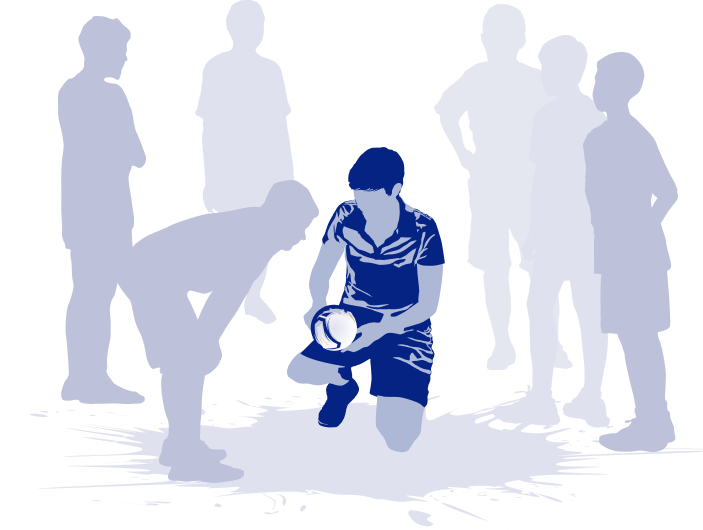
Many footballers use their status and wealth to support charitable causes, creating foundations or partnering with existing organisations to address pressing social issues. Philanthropy allows football players to give back to their communities, leveraging their influence to inspire positive change and make a lasting impact.
Several prominent football players have established their foundations, focusing on various causes such as education, health, social inclusion, and poverty alleviation. By creating personal foundations, players can direct resources and efforts towards issues that resonate with their values and experiences.
In addition to personal foundations, footballers often collaborate with existing charitable organisations, lending their names and support to initiatives that align with their interests. These partnerships can significantly boost the visibility and credibility of the organisations, helping them raise funds and awareness for their cause.

PHILANTHROPY
Community involvement is another critical aspect of a footballer's off-field life, enabling them to engage with their fans and make a tangible difference at the grassroots level.
Many footballers participate in local initiatives, such as mentoring programmes, sports clinics, and school visits, to support the communities that nurtured their talent. These efforts foster goodwill and strengthen the bond between players and their fans, demonstrating the athletes' commitment to giving back.
Some football players extend their community involvement beyond their local communities, engaging in global outreach efforts to address issues such as poverty, inequality, and environmental conservation. These initiatives demonstrate the players' commitment to leveraging their influence for the greater good, inspiring fans worldwide to join them in making a difference.

COMMUNITY INVOLVEMENT

The engagement of football players in philanthropy and community involvement yields numerous benefits for both the players and the communities they support. By participating in philanthropic activities and community involvement, footballers can experience personal growth and fulfilment, developing empathy, humility, and a sense of purpose beyond their careers.
A commitment to philanthropy and community involvement can significantly enhance a football player's public image, fostering admiration and respect from fans, the media, and fellow players.
Ultimately, the philanthropic and community engagement efforts of football players can create a lasting, positive impact on society, addressing critical social issues and improving the lives of countless individuals.


SCROLL
In today's hyper-connected world, a football player's off-field life often revolves around personal branding and media relations. These factors play a significant role in shaping a player's image, reputation, and potential earning power.
THE OFF-FIELD LIFE OF A FOOTBALL PLAYER
8.5 Personal Branding & Media Relations

Personal branding is the process of creating and managing a football player's image, values, and reputation in the public eye. A strong personal brand can enhance a player's popularity, open doors to lucrative sponsorship deals, and even influence their on-field performance.
To build a personal brand, football players must first develop a unique identity that sets them apart from their peers. This identity may be based on their playing style, personality, or off-field interests, and should resonate with the broader public.
Social media platforms play a crucial role in the development and maintenance of a footballer's personal brand. By engaging with fans on platforms such as Instagram, Twitter, and Facebook, football players can showcase their personality, share insights into their personal lives, and build a loyal following.
A strong personal brand can attract lucrative sponsorship and endorsement opportunities, providing footballers with additional income streams and enhancing their overall marketability. These deals often require players to promote products or services, wear branded apparel, or make public appearances on behalf of the sponsoring companies.

PERSONAL BRANDING
Effective media relations are essential for football players to manage their public image and navigate the scrutiny that accompanies professional sports.
Football players must learn to interact with the press in a professional and strategic manner, as their words and actions can significantly impact their reputation. Players should be well-versed in handling interviews, addressing controversies, and managing public expectations.
In times of crisis or controversy, football players must rely on their media relations skills to minimise damage to their reputation and personal brand. This may involve issuing public apologies, providing clarifications, or engaging with fans and the media to address concerns.
Cultivating positive relationships with the media can be beneficial for football players in the long run, as it can lead to favourable coverage and increased visibility. Players should make an effort to be accessible, honest, and respectful when interacting with journalists and other media professionals.

MEDIA RELATIONS

To help manage their personal branding and media relations, many football players enlist the services of agents and publicists.
Agents act as intermediaries between footballers and clubs, sponsors, and the media, helping to negotiate contracts and secure endorsement deals. They also provide guidance and support to players regarding their public image and media engagements.
Publicists are responsible for promoting and protecting a football player's image and reputation. They work closely with the player to develop and implement media strategies, secure positive press coverage, and manage crisis situations when they arise.

THE ROLE OF AGENTS & PUBLICISTS


SCROLL
THE OFF-FIELD LIFE OF A FOOTBALL PLAYER

The multifaceted and dynamic nature of the modern football player is a testament to the evolving landscape of the sport. No longer merely judged on their athletic abilities and on-field performances, the football player of today is expected to be versatile, adaptable, and conscientious in a variety of domains. From growing their tactical acumen and embracing leadership roles, to navigating the complex world of commercial opportunities and contributing to social change, the football player's role has expanded significantly in recent times.
The off-field life of a football player is increasingly under scrutiny, as their status as role models and cultural icons brings with it a plethora of expectations and responsibilities. The manner in which they navigate their commercial endeavours, personal branding, and commitment to promoting positive values can significantly impact their careers and the wider football community.
Ultimately, the football player's evolving role reflects the ever-changing nature of the sport itself, as well as the broader cultural, social, and economic contexts in which it is played. By understanding and embracing these diverse dimensions, aspiring football players can equip themselves with the knowledge and tools necessary to forge successful careers and contribute to the continued growth and progress of the beautiful game.


SCROLL
EPILOGUE

Y
FIGHT
OU
HAVE
to
reach your dream. You have to sacrifice and work hard for it.
TO

Leo Messi

As we bring our incredible journey through the realm of football to a close, it has been both an honour and a privilege to accompany you on this expedition of discovery.
From the fundamental principles and intricacies of the beautiful game to the multifaceted lives of those who dedicate themselves to its mastery, we have endeavoured to provide a comprehensive and engaging exploration of the world of football.


Throughout this XBOOK, we have delved into various aspects of a footballer's life, including physical attributes, technical skills, mental strength, and personal development. We have also addressed the significance of off-field matters such as personal relationships, health and wellness, financial management, and community involvement. These components, together, create a well-rounded individual capable of excelling both on and off the pitch.






May your journey be filled with triumphs, lessons, and unforgettable moments, as you strive to leave your mark on the enchanting and timeless odyssey that is football.
Embrace the challenges, relish the victories, and learn from the setbacks, for it is within these experiences that you will forge a path towards greatness, engraving your name into the annals of football history.


